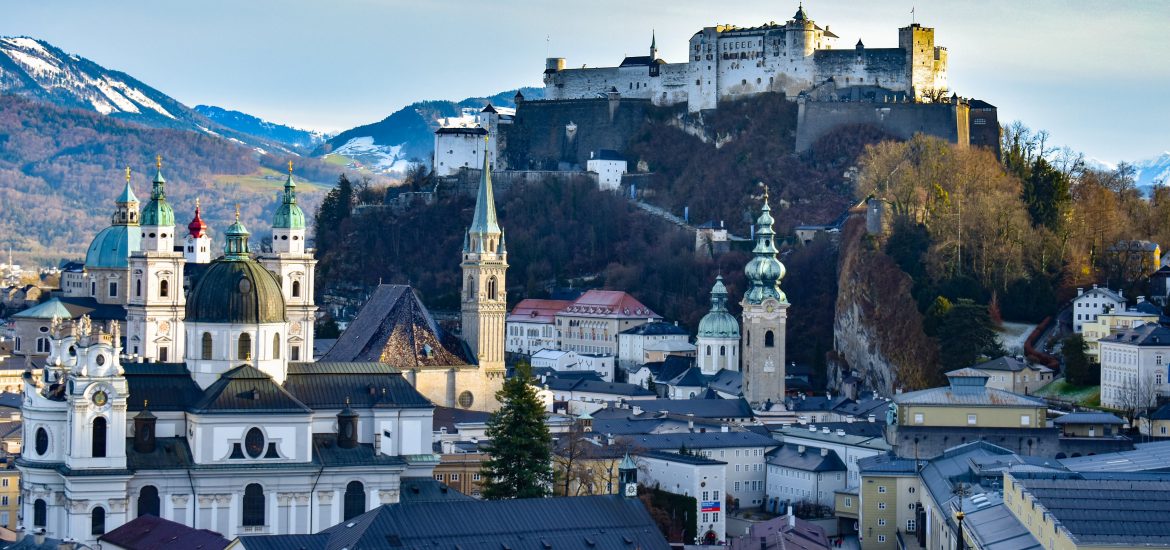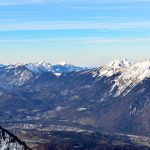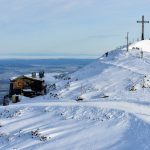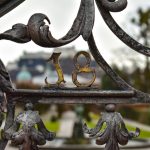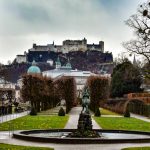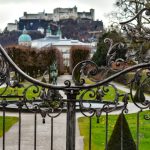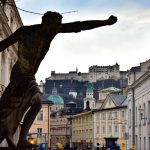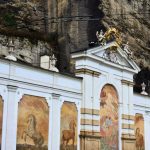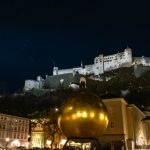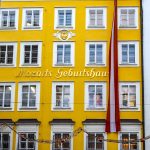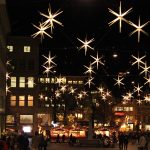As commented by the UNESCO, “the Salzburg skyline, against a backdrop of mountains, is characterized by its profusion of spires and domes, dominated by the fortress of Hohensalzburg. It contains a number of buildings, both secular and ecclesiastical, of very high quality from periods ranging from the late Middle Ages to the 20th century,” and they “combine to create a townscape and urban fabric of great individuality and beauty“. Can you notice that Salzburg is the point where Italian and German cultures meet and exchange? Can you notice the difference between the lands of the prince-archbishops and of the burghers? In this post, I’ll recommend you some wonderful viewpoints such as the Untersberg mountain, the Hohensalzburg Fortress, the Mönchsberg hill, the Kapuzinerberg hill, the Mirabell Palace and Gardens, etc., where you can really enjoy and admire the fabulous city of Salzburg. Just a reminder, if you are a fan of the movie “The Sound of Music“, a lot of shooting locations will be mentioned in this post as well.
If you have read my previous two posts about Salzburg, please click here to skip the general introduction and jump directly to the main content of this one. If not, the following two chapters will, 1) talk about Salzburg as the shooting location for the external scenes of the American musical drama film “The Sound of Music“, 2) explain how the city meets 3 out of the 10 Selection Criteria to be inscribed in the UNESCO World Heritage list, 3) provide you with some practical information such as the Salzburg Card, which gives you free access to all the attractions in the city and public transport and 4) introduce to you the general structure of my fours posts about Salzburg. Now let’s embark on our journey and get to know this charming city.
As the UNESCO comments:
Salzburg has managed to preserve an extraordinarily rich urban fabric, developed over the period from the Middle Ages to the 19th century when it was a city-state ruled by a prince-archbishop. Its Flamboyant Gothic art attracted many craftsmen and artists before the city became even better known through the work of the Italian architects Vincenzo Scamozzi and Santini Solari, to whom the centre of Salzburg owes much of its Baroque appearance. This meeting-point of northern and southern Europe perhaps sparked the genius of Salzburg’s most famous son, Wolfgang Amadeus Mozart, whose name has been associated with the city ever since.
萨尔茨堡市历史中心: 当萨尔茨堡还是大主教统治下的一个城邦的时候,就一直在尽力保护那些建于中世纪至19世纪的珍贵城市建筑。在她广为人知之前就以其火焰样的哥特式艺术吸引了大批工匠和艺术家。后来,意大利建筑师文森佐·斯卡莫齐(Vincenzo Scamozzi)和山迪尼·索拉里(Santini Solari)为这里带来了大量巴洛克风格的建筑,通过他们的作品,这个城市也得到了更大的知名度。也许正是这种南北欧艺术的交融才成就了萨尔茨堡最著名的天才——乌夫冈·阿马戴乌斯·莫扎特(Wolfgang Amadeus Mozart)。从那时起至今, 他的名字便一直和这个城市联系在一起。
1. Introduction to the city
1.1 The Sound of Music
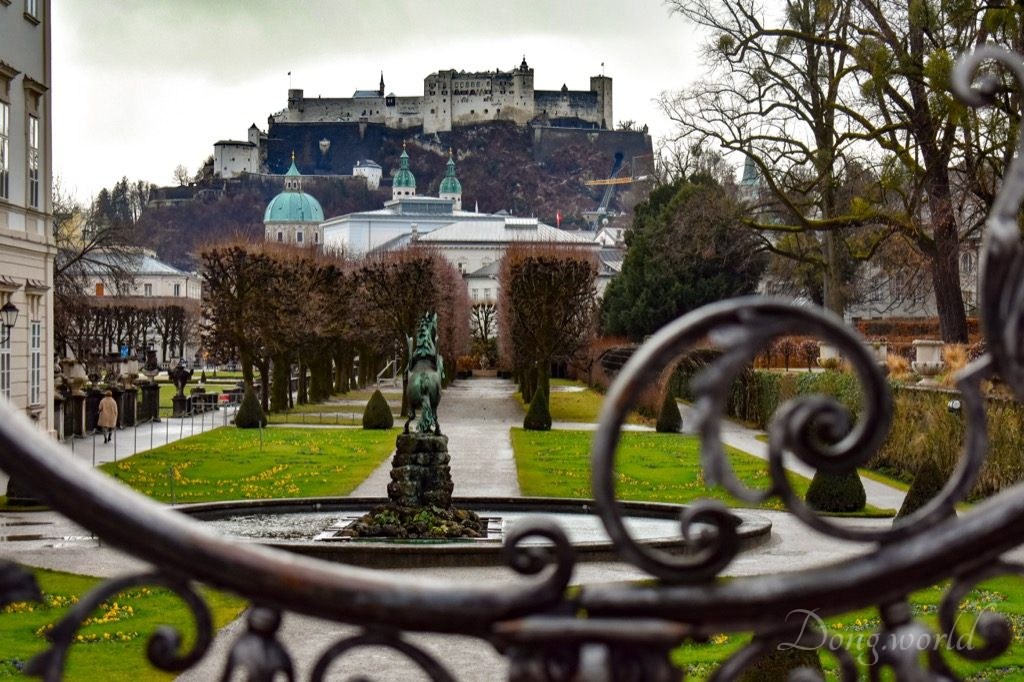
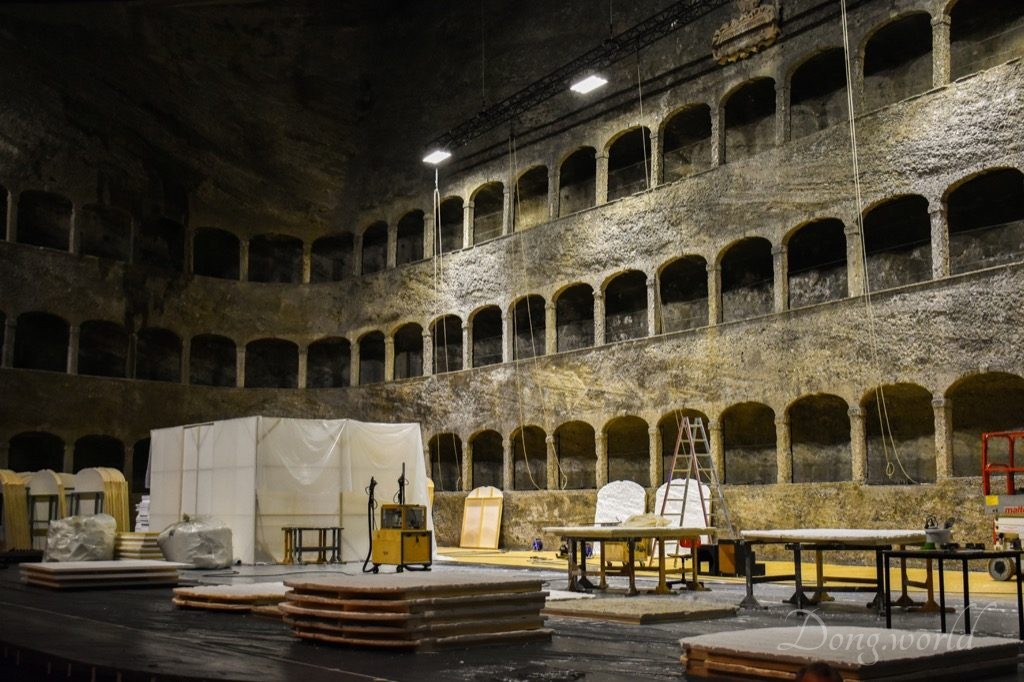
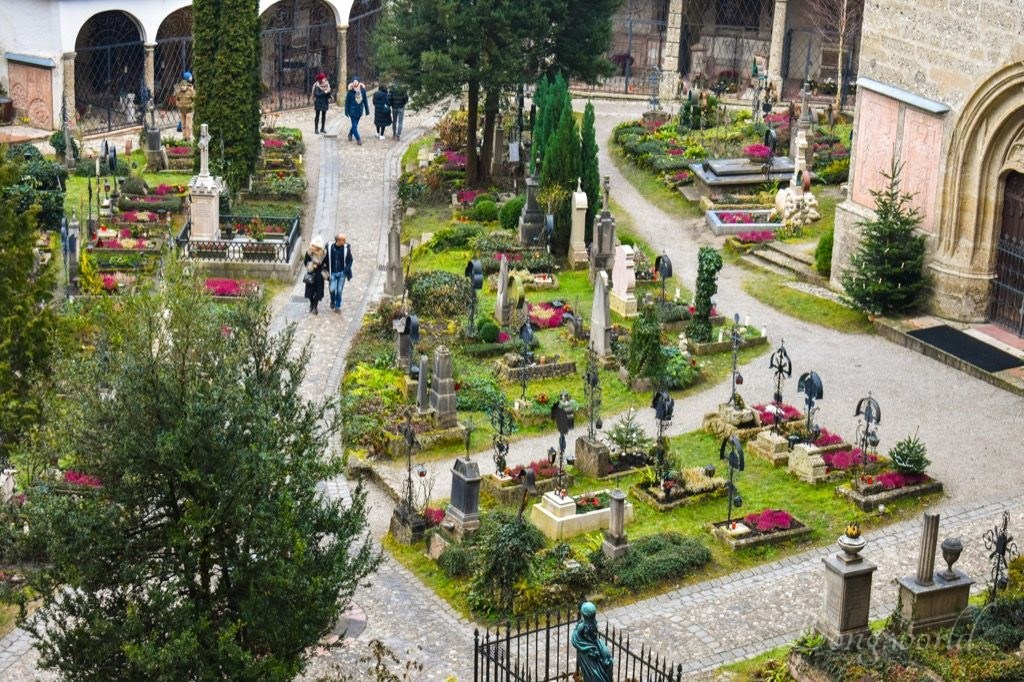

What do you first think of when someone mentions Salzburg? For me, Mozart of course, and then it’s the movie “The Sound of Music“, a 1965 American musical drama film produced and directed by Robert Wise, and starring Julie Andrews. Being a huge success, it received five Academy Awards, including Best Picture and Best Director, and in 2001, the United States Library of Congress selected it for preservation in the National Film Registry, finding it “culturally, historically, or aesthetically significant”. I’m not sure how popular it is in your country, but in China, I can say that once you sing “Do-Re-Mi“, “The Lonely Goatherd”, “My Favorite Things”, “Edelweiss” and “So Long, Farewell”, most of the people around my age will recognize from which movie they are immediately. The film was so popular that I remember I watched it during classes (played by the teacher) in primary school, middle school and high school and my classmates and I even performed part of it in the primary school graduation ceremony. As I learnt from the info sheets provided by the tourism office, “The Sound of Music” has been seen by every one out of three Japanese tourists and is one of the main reasons for three quarters of American tourists to visit Salzburg.
Having said so much about the movie, what does it have to do with Salzburg then? In fact, the general plot is based on a real story (with certain variations) of the von Trapp family who lived here and the external scenes of the movie was shot in this city and the surrounding region. Though more than 50 years has passed, I still recognized many places that I saw in the movie. For example, the Mirabell Palace and Garden (as you can see in the first picture above), where Maria and the children were dancing and finished the song “Do-Re-Mi” at the background of the rooftops, towers and the fortress, the Felsenreitschule (as you can see in the second picture above), where the von Trapp family win first prize at the end of the film, St. Peter’s cemetery (as you can see in the third picture above), where the family hides from the Nazis, Schloss Leopoldskron, the house where the family lived in the movie, the Nonnberg Convent (as you can see in the fourth picture above), where the young Maria was a novice, the Residenzplatz Square and Residence Fountain, the Sound of Music Pavillon close to Schloss Hellbrunn and so on. I even found the narrow streets, houses and various old shops familiar and they brought back my memory not only of the movie but also of the school time with my classmates and friends, whom I meet rarely nowadays… I recommend you obtaining a map from the tourism office called “Salzburg – Die Bühne der Welt” and on it, you can see attractions marked with musical notes, which indicate the locations for shooting the movie. In my this and the following posts, I’ll also remind you of the scenes when I talk about relevant attractions. If you wanna know more about the shooting locations please click here and if you wanna know about guided tours of this particular theme, please click here.
1.2 UNESCO World Heritage
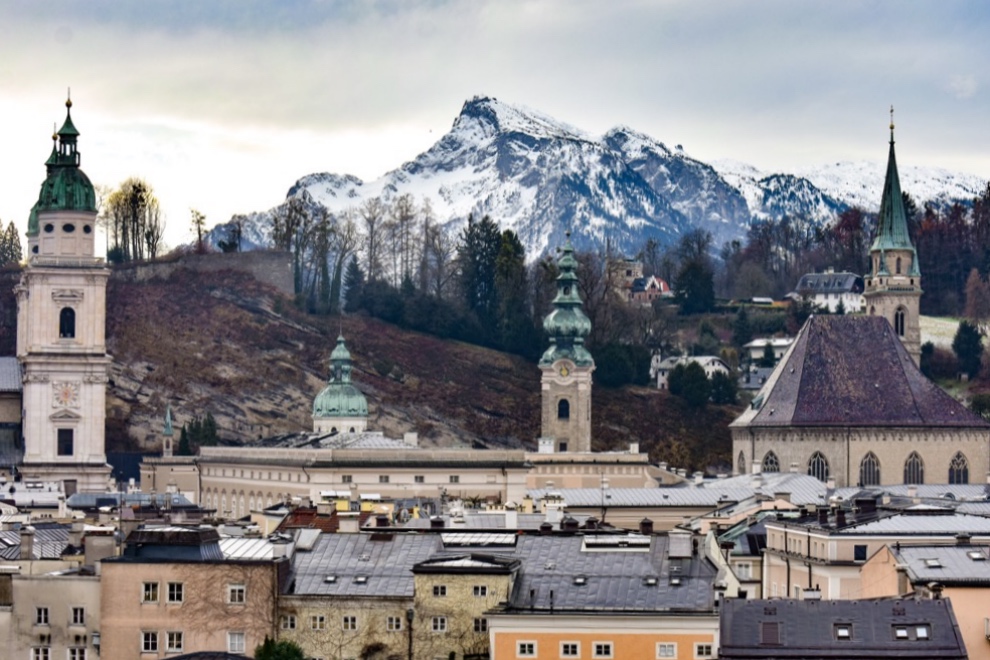
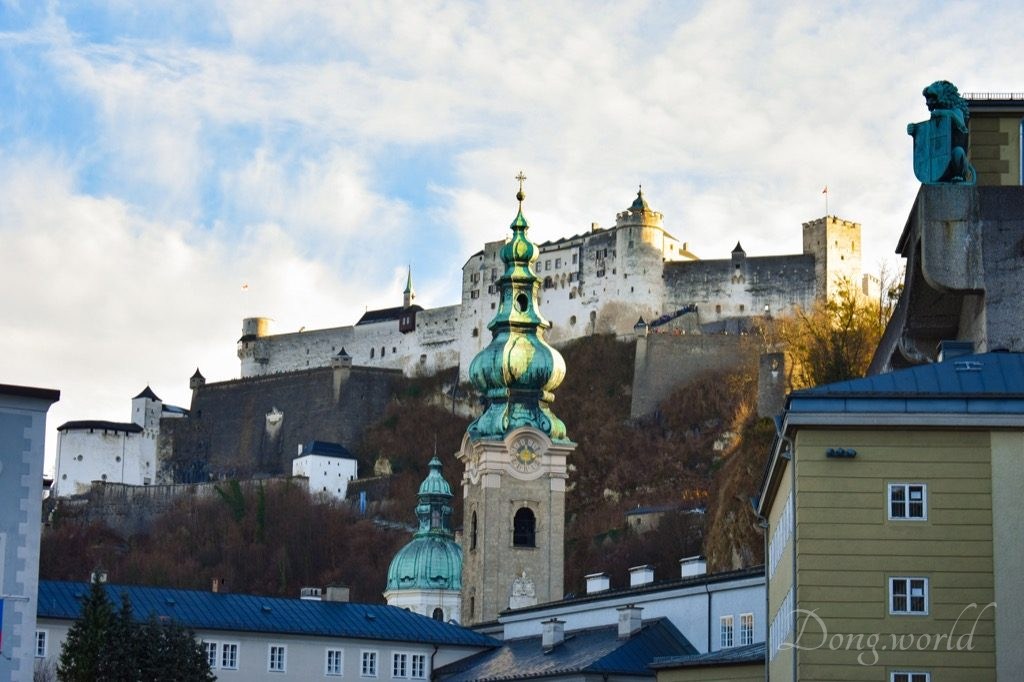
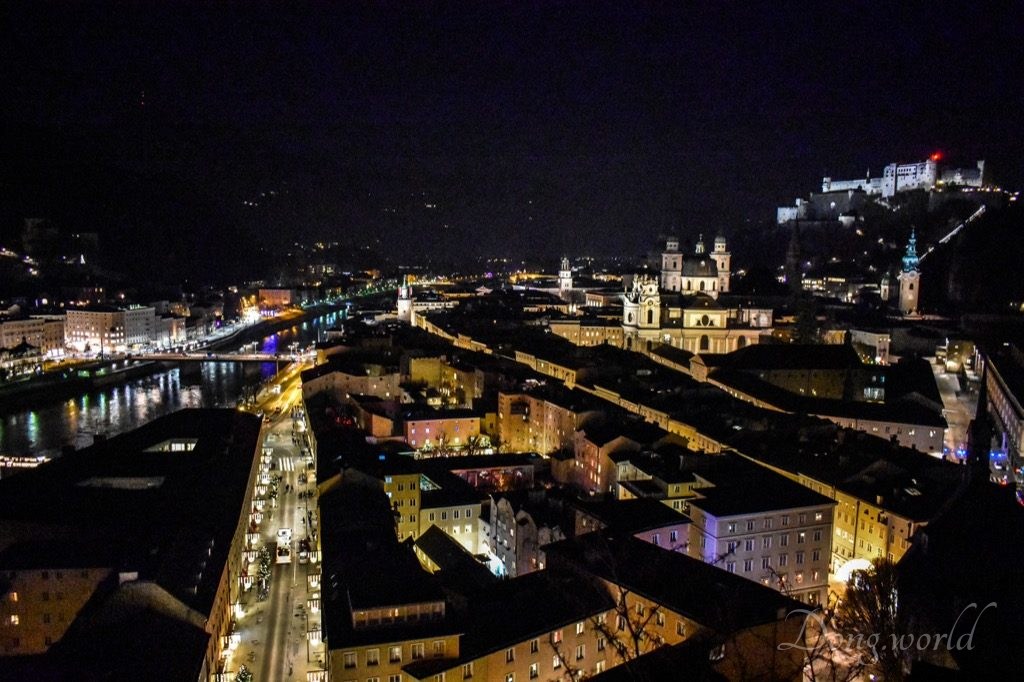
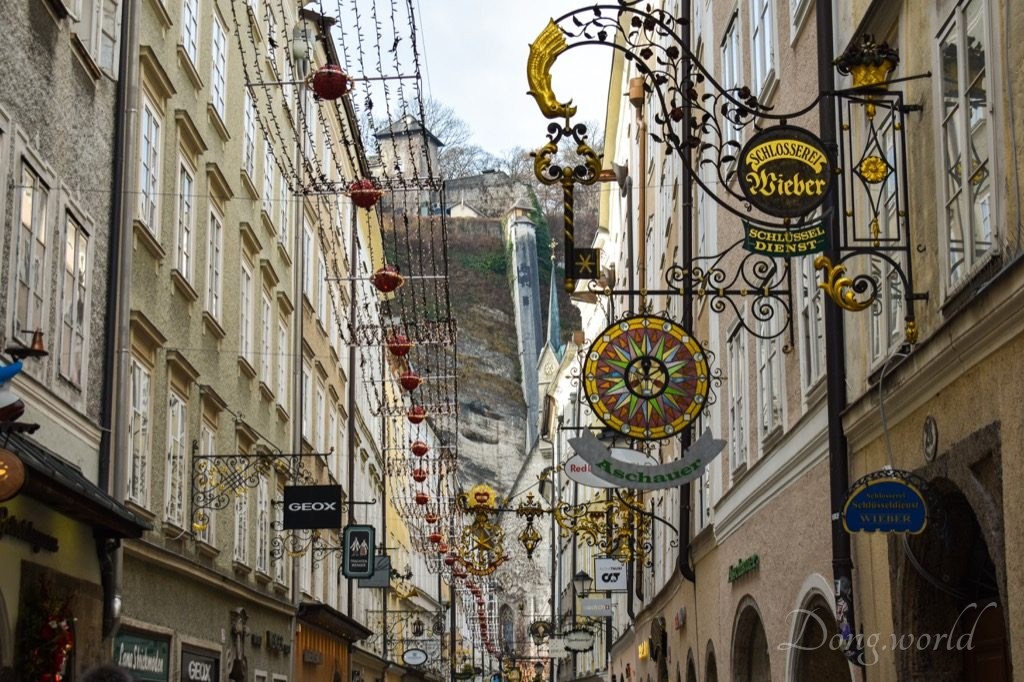
Considering I’m recently focusing on the visiting and writing about the UNESCO World Heritage sites in Europe, I decided to pay a visit to Salzburg during its 20-year anniversary of being in the UNESCO World Heritage list (1997-2017). In 1997, UNESCO officially recognized the historical center of Salzburg as a World Heritage site because of its unique cityscape influenced by both German and Italian cultures, its architecture shaped by the prince-archbishops of the former days and its significant role as a musical metropolis and the birthplace of Wolfgang Amadeus Mozart. Though currently a modern city, its distinctive architectural features have been well preserved.
Before visiting the city, I had no idea that it once served as the seat of ecclesiastical power in the heart of Europe. I guess that’s why there are so many churches and monasteries in the old town. Being a busy merchant town in the Middle Ages and the former residence of the prince-archbishops, Salzburg has an iconic ensemble of buildings dating back to different periods of time. The thriving cultural exchange between the south and north of Europe, in particular the architects and artists invited here from Italy, made the city one of the most beautiful and unique in the whole of Europe. Besides its architectural beauty, how can we ignore its role as a musical and cultural metropolis? It is well-known that Wolfgang Amadeus Mozart was born in Getreidegasse 9 and over 350 of his most beautiful pieces were written here, but do not forget that it is also here that the theatre director and producer founded the famous Salzburg Festival. Perhaps this is one of the reasons why “The Sound of Music” was chosen to be based on a real Salzburg family and filmed here.
The historical center of Salzburg is accepted and protected as a UNESCO World Heritage site based on three out of the ten Selection Criteria. The fact that it was the former residence of the prince-archbishops meets criterion ii: “to exhibit an important interchange of human values, over a span of time or within a cultural area of the world, on developments in architecture or technology, monumental arts, town-planning or landscape design”. Its authentic, well-preserved and unique architectural ensemble in the city center meets criterion iv: “to be an outstanding example of a type of building, architectural or technological ensemble or landscape which illustrates (a) significant stage(s) in human history”. Last but not least, its development in music and most famous son Mozart meet criterion vi: “to be directly or tangibly associated with events or living traditions, with ideas, or with beliefs, with artistic and literary works of outstanding universal significance”. I’ll elaborate a bit more on these three criteria in the following sections and organize my four posts about Salzburg according to them. However, I’d like to remind you that the three aspects are interconnected and it’s impossible to talk about any one of them in a strictly isolated manner without mentioning the other two.
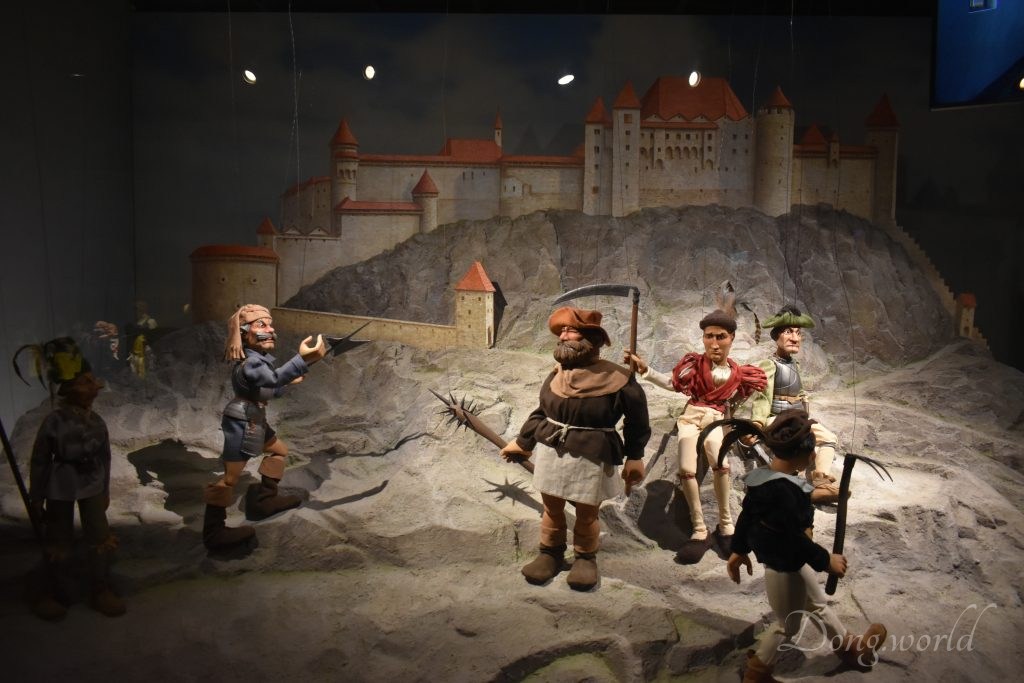
What’s also notable in this city is the Salzburg Marionette Theatre, inscribed in the UNESCO List of Intangible Cultural Heritage, on which 96 traditions in Austria are featured and 25 of them are in Salzburg Province. The theatre is particularly worth preserving due to its “highly developed form of puppet and marionette theatre”. As commented by the UNESCO, “the Salzburg Marionette Theatre has been dedicated to this art from since 1913. Aside from performance skills, it also requires passion on the craftsmanship required to carve, paint, costume and move the puppets.” I’ll talk more about this form of art when I introduce to you the Marionette Museum in the Hohensalzburg Fortress. Do you remember in “The Sound of Music“, Maria and the seven children perform a puppet show with the song “The Lonely Goatherd” to impress Captain Georg von Trapp and the Baroness? It seems the movie does try to integrate the heritage of the city.

Silent Night
Holy Night
All is calm
All is bright
Round yon virgin
Mother and child
Holy infant so tender and mild
Sleep in heavenly peace
Sleep in heavenly peace
Do you know the song above? It is certainly one of the or even the most popular Christmas carol and both its lyrics and melody are so familiar. Once I hear it either on the streets or on TV, I know that Christmas is coming. Composed in 1818 by Franz Xaver Gruber with lyrics by Joseph Mohr in the small town of Oberndorf bei Salzburg, “Silent Night” was declared an intangible cultural heritage by the UNESCO in 2011. Although the original version of the words and melody from 1818 no longer exists, four original autographs by Franz Xaver Gruber (written in his own hand) have been preserved. In the Salzburg Museum housed in the Neue Residenz, you will have the opportunity to see the only autograph from the pen of Joseph Mohr (facsimile). As you can see from the picture above, the title at that time was simply “Weihnachtslied” (Christmas Carol).
1.2.1 Salzburg as an ecclesiastical principality and state of the Holy Roman Empire
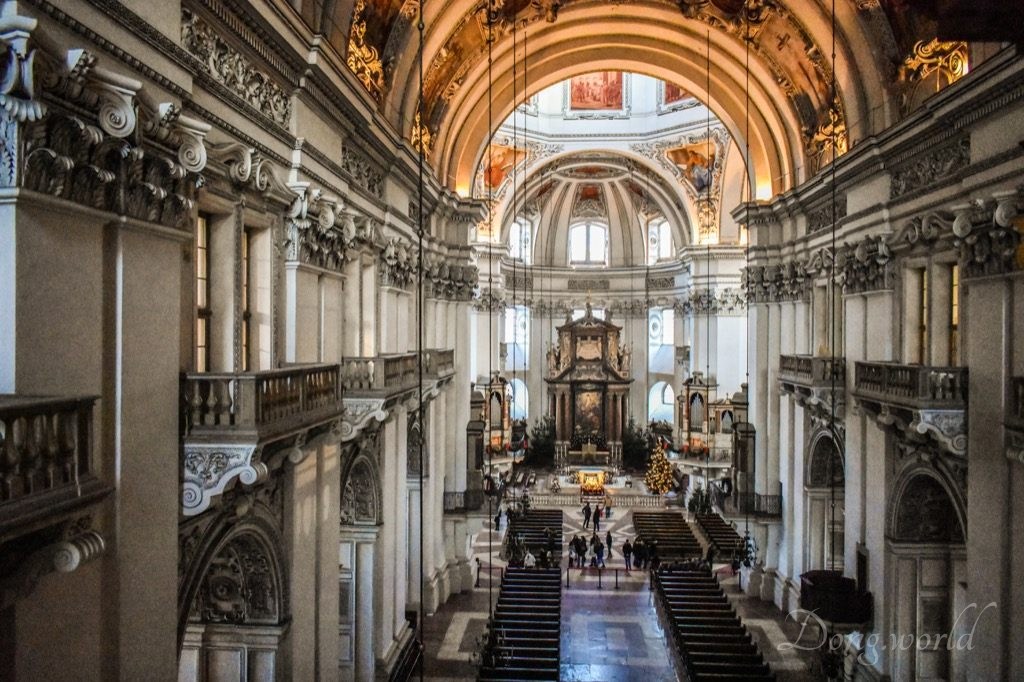

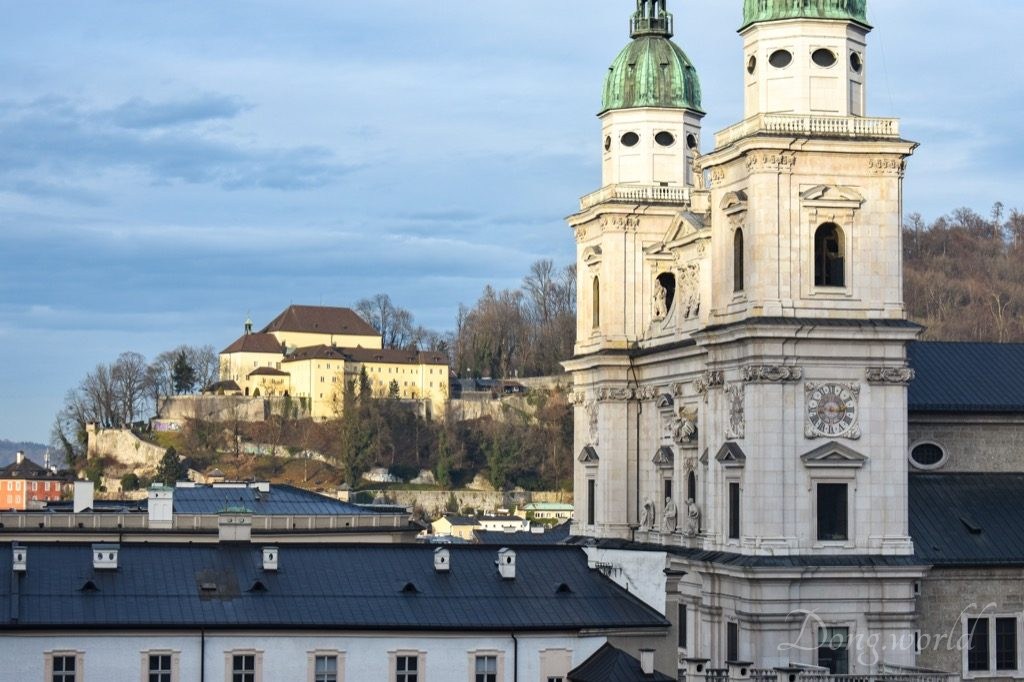
For over 1000 years, Salzburg was part of the Holy Roman Empire with its ecclesiastical power in the hands of the archbishops. As I read from the press information, “after the Vatican, it was the second most important seat of the church, thus the name, ‘The Rome of the North’.” The Baroque squares, narrow valleys, churches and monasteries all testify to the architectural, artistic, historical and cultural legacy of the prince-archbishops. As a state of the Holy Roman Empire, Salzburg, as its name indicates (Salz means salt in German), owed its wealth to the mining of salt, ores and precious stones, which allowed the untiring building activities in the city. During this period of time, Rome, as the model, played an important role in shaping Salzburg’s appearance. A cathedral, many churches, chapels, monasteries and even graveyards were built under the influence of Italian precedents. Many of the constructions were overseen by Italian master architects including Vincenzo Scamozzi, the spiritual heir of Andrea Palladio, who designed countless masterpieces in the Veneto region. What’s particularly worth mentioning is the period between 1587 and 1612, when Prince-Archbishop Wolf Dietrich, a great admirer of the Italian way of life, made a long-lasting impression upon the appearance of the town by transforming the medieval Salzburg into a peal of the early Baroque period. All in all, we can say that the archbishops laid the foundations for the Salzburg that we see nowadays, the city of churches.
In successfully making Salzburg a globally recognized major city in the music world, the patronage provided by the prince-archbishops to the musicians and composers in old times played a vital role. In the cathedral, you will see the magnificent main organ on the western gallery as well as the south-eastern pipe organ, the “Hoforgel” (Halo Organ) which was frequently played by W. A. Mozart. Also here, you will see the font in which both Mozart and Joseph Mohr, the lyricist for “Silent Night”, were baptized.
In order to have a better or deeper understanding of this aspect of the city, I recommend you visiting the cathedral, DomQuartier Museums, St. Peter’s Church, Cemetery and Catacombs, the Nonnberg Priory, the Holy Trinity Church, St. Sebastian’s Church & Cemetery, the Capuchin Monastery and the Franciscan Church. If you are particularly interested in religion, please click here to check the full list of churches that you can visit in Salzburg.
1.2.2 A musical metropolis and the birthplace and residence of W. A. Mozart
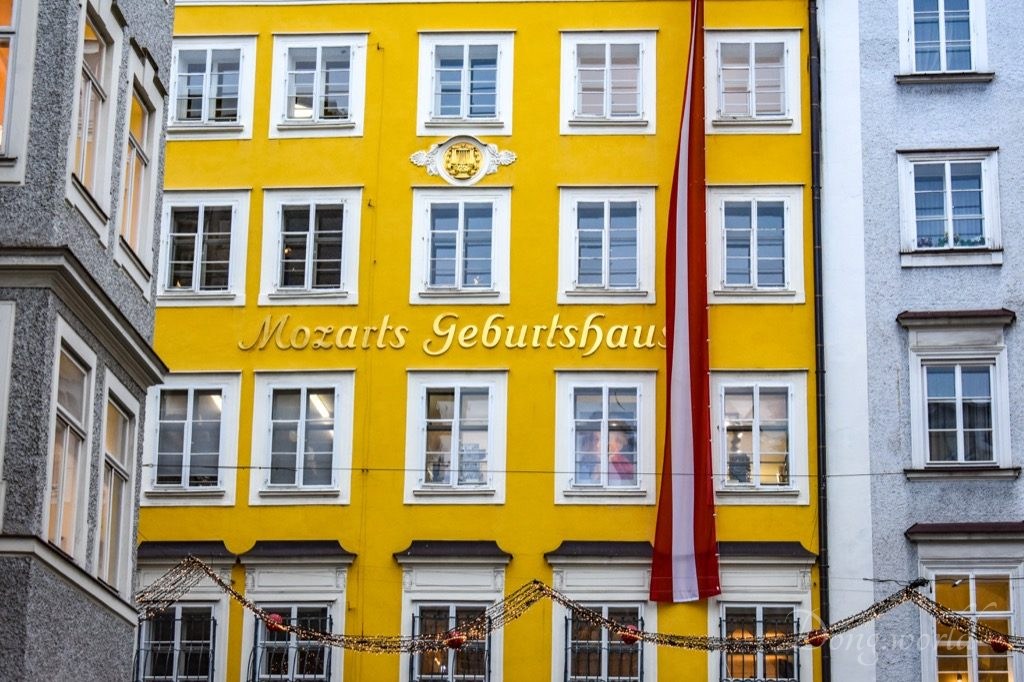
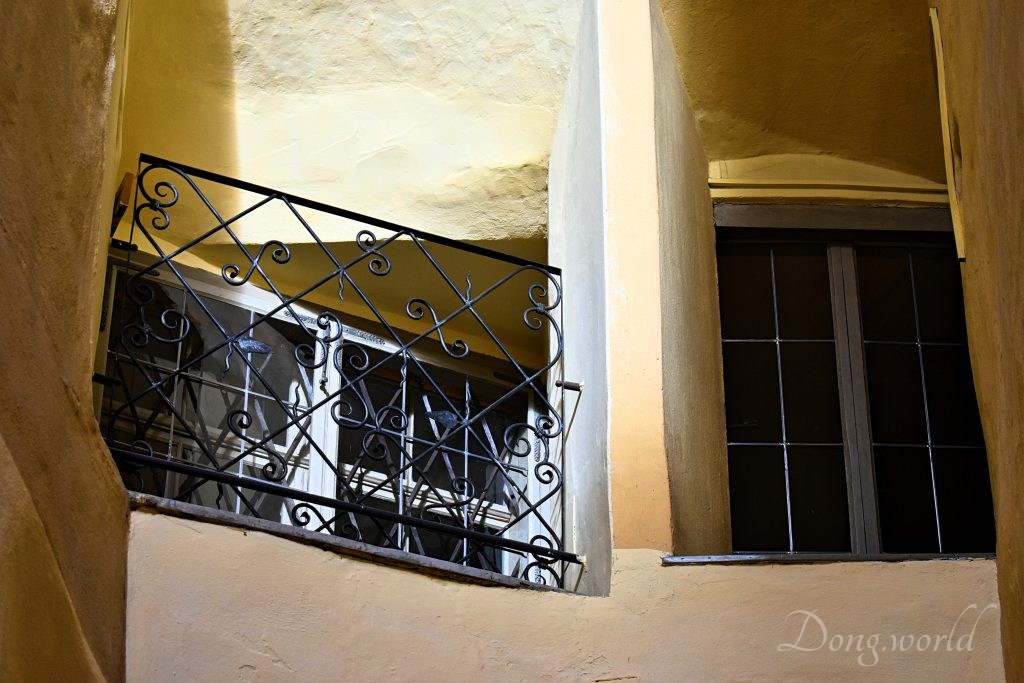
The first thing I know about Salzburg is that it’s the city where the music genius Wolfgang Amadeus Mozart was born and grew up. Judging from the amount of tourists in Mozart’s Birthplace and Residence Museums, I’m certain that he is one of the main reasons why people choose to come here. Born on 27th January 1756 in Getreidegasse 9, Mozart showed prodigious ability from his earliest childhood. Already competent in keyboard and violin, he composed from the age of five and performed before the European royalty. After the completion of renovations in 2010, Mozart’s Birthplace now houses a permanent exhibition based on four themes. As you can see in the first picture above, it is one of the most frequently photographed buildings and one of the most visited museums in the world. Why? Because it is right here at this place that he wrote more than 350 of his most beautiful pieces and we can say that this house witnessed not only Mozart’s birth but also the development in his career which eventually turned him into one of the most significant composers in the world. Another building or museum I’d like to recommend to you is the Mozart Residence, where Mozart lived from autumn 1773 until 1780 before settling for the rest of his life in Vienna.

Since we are talking about Mozart, I’d like to take a “detour” for chocolate lovers. In 1890, Salzburg’s master confectioner Paul Fürst invented a praline and called it Mozartkugel (Mozart Ball) in honor of the great composer. The praline features its round shape and technically difficult concentric composition: green pistachio marzipan surrounded by a layer of nougat, and dipped into dark melted chocolate. The “Original Salzburger Mozartkugel” is a specialty still produced by hand nowadays without any artificial ingredients or preservatives and it can not be found in international supermarkets or souvenir booths but only in the four “Confiserie Fürst” shops in Salzburg. Please note that I saw many shops selling Mozartkugel wrapped with foil with the famous colorful portrait of Mozart, but that’s not the original one. The original ones can only be found in the “Confiserie Fürst” shops, as you can see from the picture above, and they are wrapped with silver foil with a portrait of Mozart in blue.

Talking about music in Salzburg, if the most famous person is Mozart, then the most famous song is probably “Silent Night“, first performed at the former St. Nikola parish church in Oberndorf bei Salzburg by the schoolmaster Franz Xaver Gruber and the young priest Joseph Mohr on Christmas Eve 1818. The lyricist Joseph Mohr was born and raised in Salzburg and the original autograph transcribed in his own hand is now preserved in the Salzburg Museum. As you might have noticed, 2018 will be the 200-year anniversary of the song and various events will take place in the city throughout the year. For example, from 24th November to 18th December 2018, the musical “Silent Night Story” written by John Debney for this occasion will be performed at the Felsenreitschule; from 30th November to 16th December 2018, the traditional Salzburg Advent Singing will introduce its own special production focusing on the “Silent Night” theme; and from 28th September 2018 to 3rd February 2019, a special exhibition called “Silent. Night. 200. Creation, Message & Commerce” will be held in the Salzburg Museum. In keeping with the six verses of the song, the exhibition comprises six thematic spaces depicting the musical qualities of the song, its dissemination, the biographies of its creators as well as its political and commercial exploitation. If you wanna know more about the advent events related to the “Silent Night” in 2018, please click here.
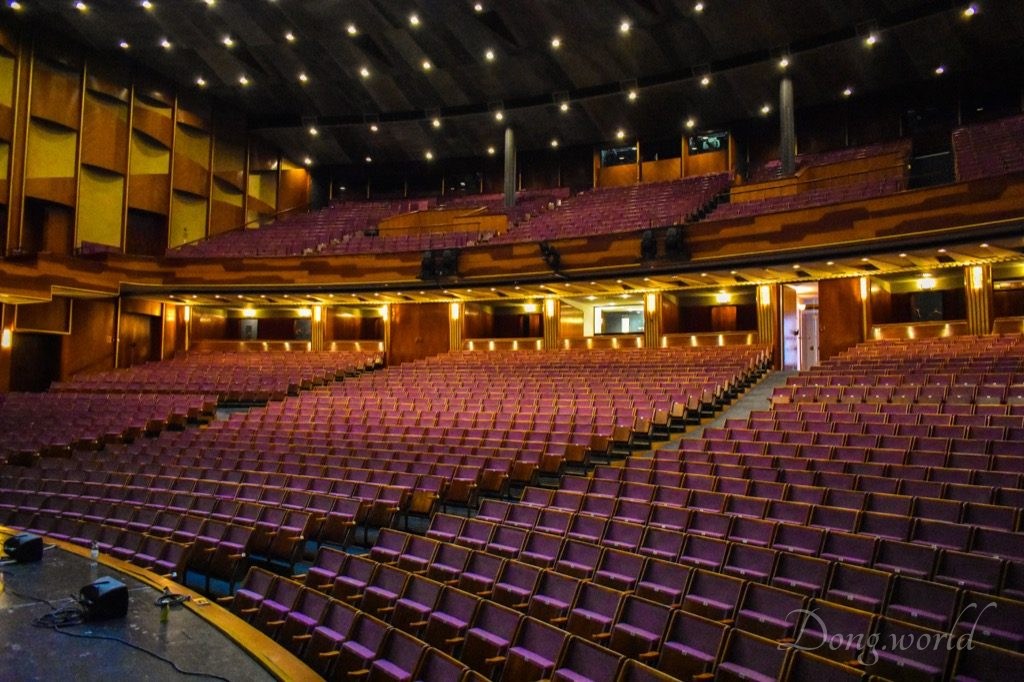
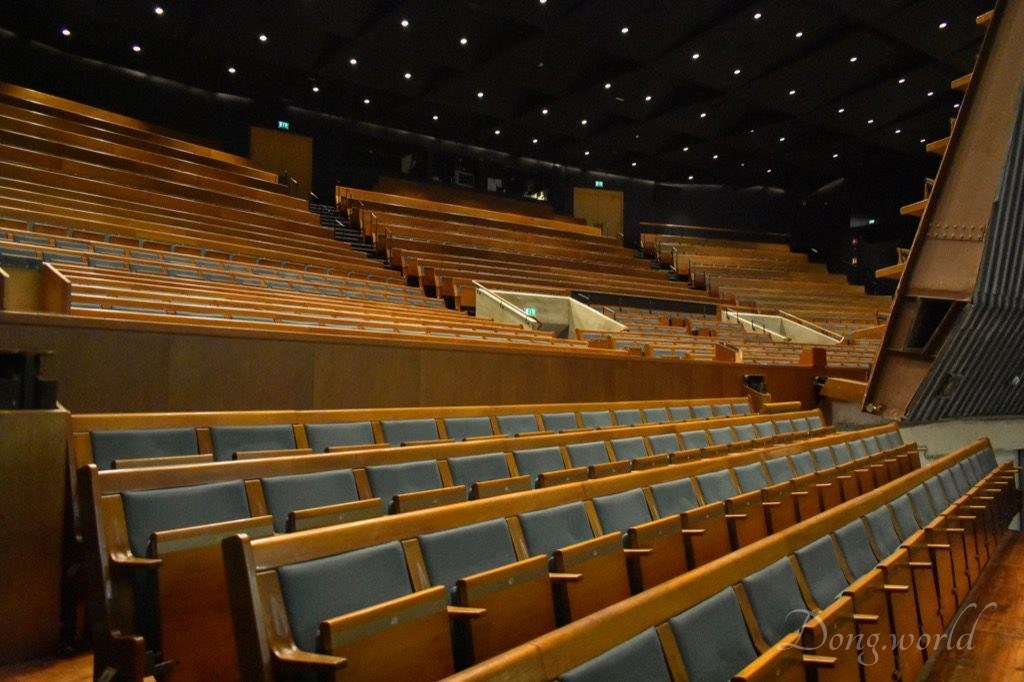
Did you know that Salzburg has another nickname which is “Stage of the World“? As a world-renowned musical metropolis, it holds 4500 cultural events each year. For example, at the end of January or beginning of February, the high-quality Mozart Festival, featuring fantastic soloists, conductors and orchestras such as the Vienna Philharmonic Orchestra, Concentus Musikus, Camerata Salzburg and the Mozarteum Orchestra, attracts numerous music lovers to the city; in the spring, there are the Easter and Whitsun Festivals founded by the world-famous Salzburg-born conductor Herbert von Karajan; in the autumn, there is the Festival Jazz and the City; and in the winter during the Christmas time, probably the most beautiful time of the year, the Salzburg Advent Singing at the Large Festival Hall (Grosses Festspielhaus), the Salzburg Advent in St. Andrew’s Church and the Winterfest will surely take you into a fairyland full of music, romance, warmth, peace and winter charm. Not on time for the festivals? Don’t worry. Throughout the year, you will find Salzburg Palace Concerts in the Mirabell Palace, Fortress Concerts in the state rooms of the Hohensalzburg Fortress, Mozart Dinner Concerts in St. Peter’s and a diversified program offered by Salzburg’s Marionette Theater. If you are interested, please click here to check the ongoing events upon your arrival and maybe book your tickets in advance.
Did you notice that I didn’t mention any festivals in the summer in Salzburg? It’s not because nothing is happening during this season but because the festival is so important that I wanna dedicate a paragraph to it separately. This festival is called “Salzburger Festspiele” (Salzburg Festival in English) and is held each summer (for five weeks starting in late July) with one highlight being the annual performance of the play Jedermann (Everyman) by Hugo von Hofmannsthal. Founded in 1920 after World War I by Max Reinhardt together with a group of intellectuals and artists such as the poet and dramatist Hugo von Hofmannsthal, the composer Richard Strauss, the scenic designer Alfred Roller and the conductor Franz Schalkwho, who aimed at turning the entire city into a stage, the Salzburg Festival is one of the world’s most distinguished music festivals with many prominent guests. The Festival Halls, where the festival is held, offer a guided tour of the Felsenreitschule and the Great Festival Hall (Großes Festspielhaus) and I’ll talk more about them in my second post about Salzburg.
In general, if you wanna experience Salzburg as a musical capital, I recommend you visiting the birthplace and residence of Mozart, joining a guided tour of the Festival Halls or simply attending one of the festivals or concerts during your visit. If you are particularly interested in the Christmas carol “Silent Night“, you should visit the Salzburg Museum housed in the Neue Residenz.
1.2.3 A unique cityscape integrating northern and southern European cultures
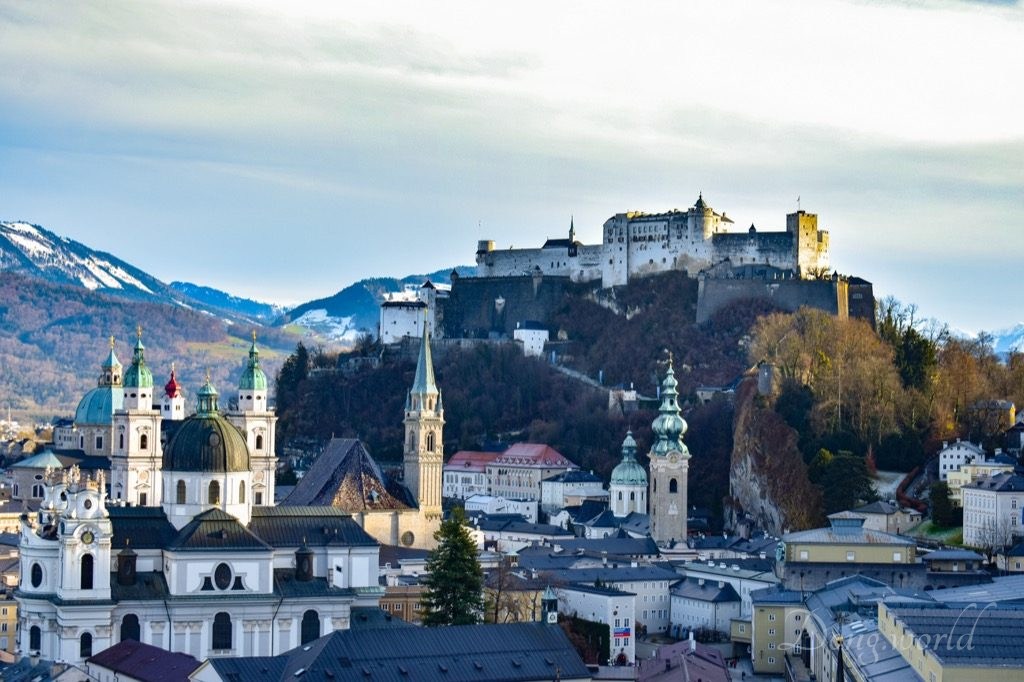
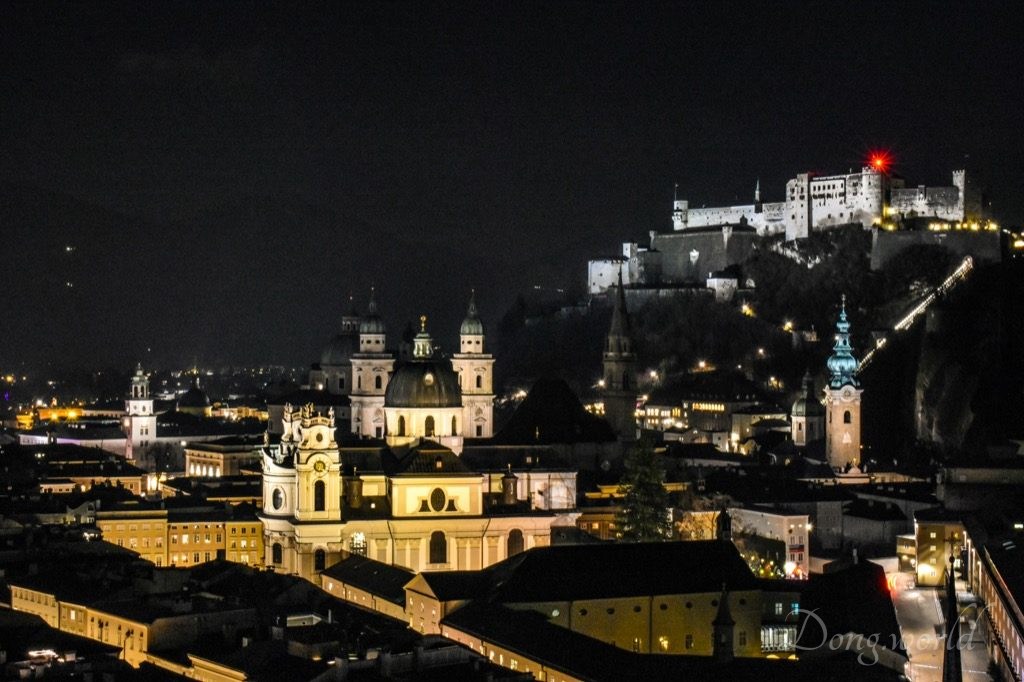


Established at the end of the 7th century, Salzburg was ruled by Catholic bishops and archbishops up until the early 19th century. A walk in the historical center will surely make you fall in love with the city but even better, why not going up the surrounding hills such as Mönchsberg, Festungsberg and Kapuzinerberg to have a stunning view of the harmonious blend of scenic landscapes and architecture? As you can see from the four pictures above, which were taken from the viewing platforms of the three hills I mentioned just now, all the baroque churches, squares, narrow streets and houses are under your eyes. The Hohensalzburg Fortress, a baroque masterpiece, can be seen from almost everywhere in the city. Dating back to the 11th century, it is one of the largest fortifications in Europe. In the festival district, you can still find evidence of the Medieval period and the Getreidegasse is one of the most charming shopping streets in the world. The St. Peter’s Monastery accommodates the city’s most lovely cemetery and the cathedral features a mighty dome and a magnificent façade which is made of Untersberg marble. In my third post about Salzburg, I’ll recommend you some viewpoints where you can truly and fully admire the beauty of this amazing city, both in the daytime and at night.
Besides appreciating its charming scenic appearance, the best way to gain a deeper understanding of Salzburg’s cultural and historical heritage is to visit its more than 20 museums and galleries. In additions to the ones I mentioned above such as the DomQuartier, the Hohensalzburg Fortress, St Peter’s Abbey, Mozart’s Birthplace and Residence, the Festival Halls and the Salzburg Museum, I recommend to you the Salzburg Open-air Museum, one of the largest museums in Austria and one of the biggest of its kind in the world, the Panorama Museum, home to an enormous panoramic painting of the historical Salzburg city and its surroundings created by J. M. Sattler, the Stiegl-brauwelt, Europe’s biggest interactive exhibition dedicated to the world of beer, Haus der Natur, one of the most visited natural history museums in Europe featuring an aquarium and a reptile zoo, the Salzburg Christmas Museum and the Museum of Modern Art. In my four posts, I’ll cover all the museums and give you a rather detailed introduction to the ones that impressed me a lot.
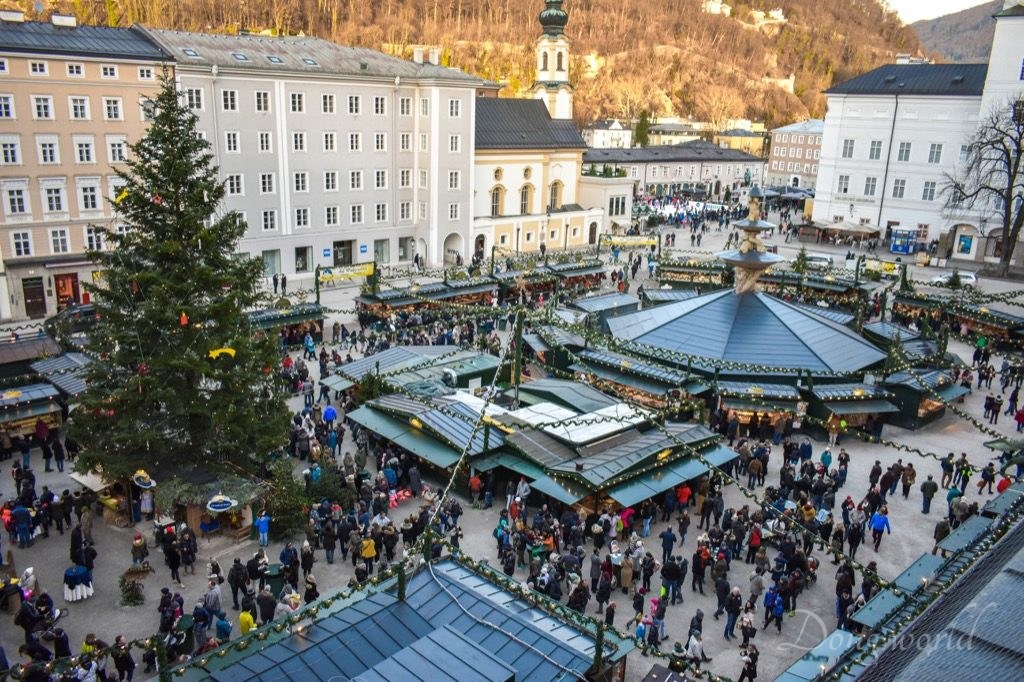


Considering I was in Salzburg during the Christmas in 2017, I’d like to talk a bit more about the Salzburg Advent. The Christmas market (Christkindlimarkt in German) on the Cathedral Square and Residence Square is absolutely a highlight and I learnt from the press information sheets that with its over 525-year history, it is one of the oldest and most beautiful advent markets in the world. In fact, besides the market on the two main squares, there are more in the Sterngarten, on the Mirabell Square, at the Hohensalzburg Fortress and at the St. Peter’s. Basically the entire historical center is turned into a winter fairyland with romantic, warm and magic Christmas atmosphere. From the end of November till Christmas, the booths offer visitors not only tasty culinary delicacies but also traditional handcrafted products from Salzburg. As I mentioned above, this year, 2018, the Christmas here will be even more special because of the 200-year anniversary of the song “Silent Night”. Just a reminder, there is a Christmas Museum on the Mozart Square and I visited it because it seemed to be the “right” thing to do in such a closely related festive season. It is small but cute and if you are from western countries, I’m sure it will bring back your memory of the Christmas in your childhood. If, like me, you are from some other parts of the world, where Christmas is not really much celebrated, the museum gives you a good opportunity to learn about the history and tradition of it.
2. Practical information
2.1 Salzburg Card
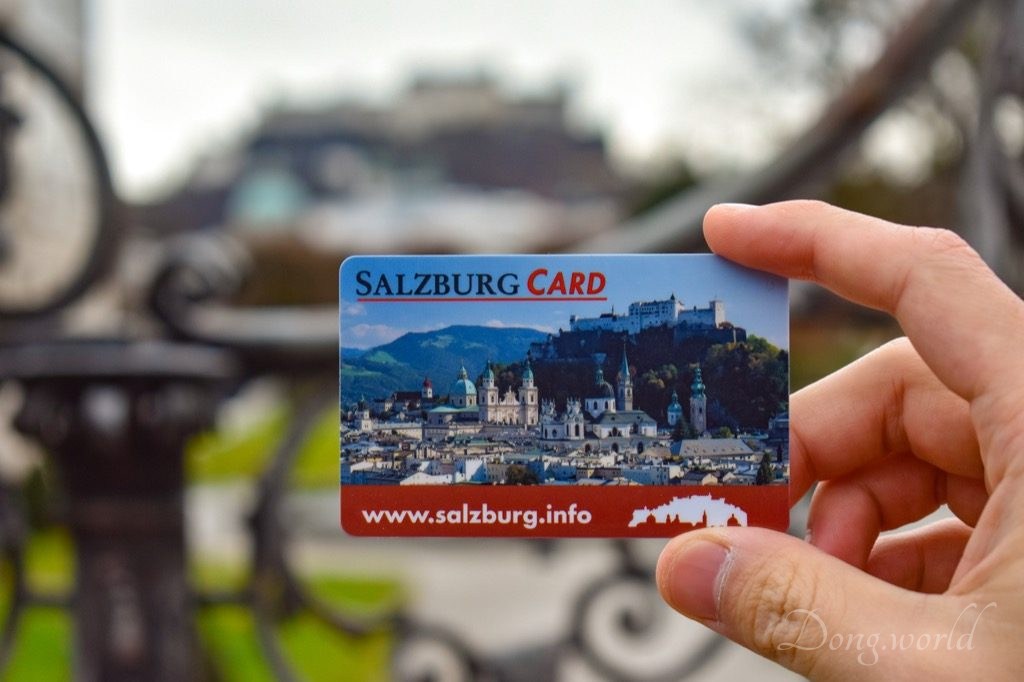
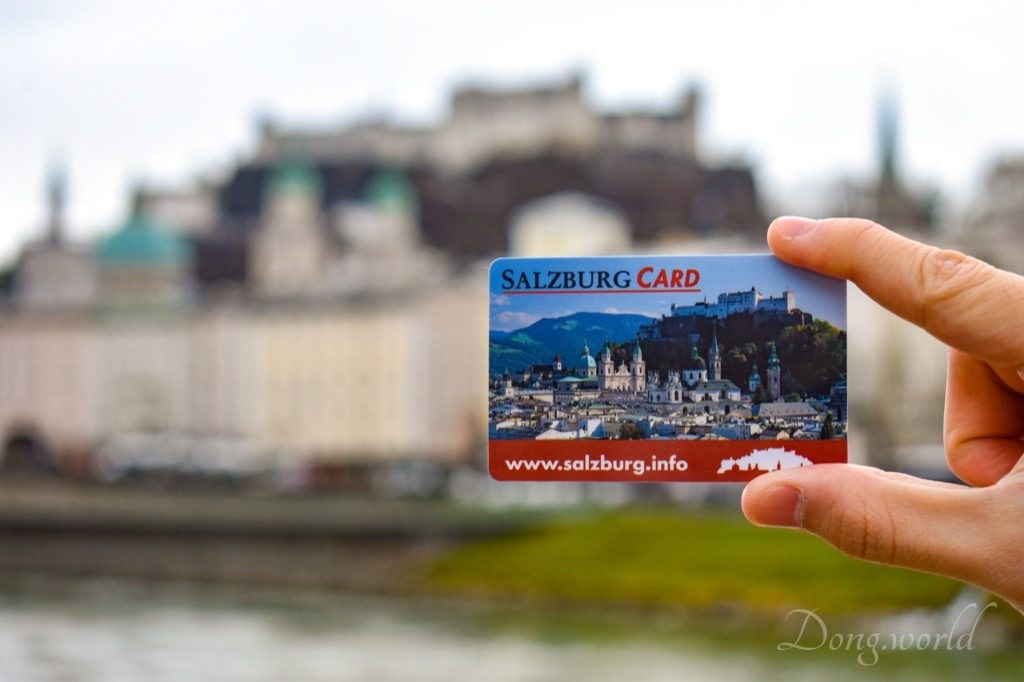
Concerning your visit in Salzburg, I’d like to give you some practical information such as the Salzburg Card, the public transport, etc. By the end of this chapter, I’ll tell you the general arrangement of content of my four posts about the city and depending on how much time you have to spend here and which aspect(s) of the city you are most interested in, you can choose to read the most relevant posts in detail.
First of all, if you want to visit most of the major attractions in Salzburg such as the DomQuartier, the Hohensalzburg Fortress, the Birthplace and Residence of Mozart and so on, I strongly recommend you buying the Salzburg Card. It has several advantages and using it to explore the city is absolutely a good deal. With this card, you can enjoy:
- one-time free entry to all the attractions and museums in the city (including the lift to go to Mönchsberg and Hohensalzburg Fortress)
- free travel on public transport (even to the Untersberg cable car station)
- discounts on cultural events such as concerts
- discounts on tours and excursions.
I was rather shocked that this one card gives free access to all the attractions in the city, but after using it, I can assure you that it’s true. Nevertheless, please note that as for entering the state rooms in the Hohensalzburg Fortress, you have to use the card before 11:00 to gain free access. The card is available at most hotels, tourism offices and ticket offices in and around Salzburg and if you wanna order it online in advance, please click here. At the back of the card, remember to write down your name and the date and time of your first use because it serves as your public transport ticket. When you get your card on site, you will get a booklet called “All of Salzburg. One card. All-inclusive”, which is very useful for your trip. In one side of it, you will find a list of the attractions together with some tips, their brief introductions, opening hours and addresses while on the other side you, will see various events, tours and excursions with discounted prices.
How much does the card cost? Well, depending on the season of your visit and how long you need the card to be valid for, the prices are different. This is because in winter some attractions such as the Hellbrunn Palace and the Salzach Cruise (from November to March) are closed and suspended.
From 1st November to 30th April and from 1st November to 31st December, each card costs:
- 24 hours: 25 €
- 48 hours: 33 €
- 72 hours: 38 €
- Please note that children between 5 and 16 years old can get the card for half price.
From 1st May to 31st October, each card costs:
- 24 hours: 28 €
- 48 hours: 37 €
- 72 hours: 43 €
- Please note that children between 5 and 16 years old can get the card for half price.
Which card should you buy? Well, depending on how many days you will stay, you should buy the corresponding card. For me, I got the 72-hour one and spent entire three days there, but still, I couldn’t visit all the attractions because there are really too many. I didn’t manage to visit the Open-air Museum, the zoo, the Stiegl Beer Museum, the Mozart Sound and Film Collection and so on and I suggest that after reading my posts, you can make a choice of your “preferences”. Don’t be greedy because you can’t see everything in Salzburg during only one trip anyway and I recommend you taking your time to get close to it, explore it and understand it.
2.2 Public transport

If you live quite close to the historical city center, I don’t think buses are that important. One thing I liked a lot about Salzburg is that its attractions are quite concentrated, which means that I didn’t need to travel a long distance to visit them. I remember that except for going to the mountain Untersberg and the Stiegl-brauwelt, I visited everything on foot. Nevertheless, during your visit, if you want to go to the Open-air Museum, Salzburg Zoo, the Hellbrunn Palace and the Trick Fountains (which I didn’t visit because I didn’t have enough time), you need to take the bus. Don’t worry, all the rides are free with the Salzburg Card.
2.3 General structure of my four posts about Salzburg
In my four posts about Salzburg, I will try to elaborate on the three criteria that the city meets which make it a World Heritage site protected by the UNESCO. In the first post, I’ll talk about the fortress, the DomQuartier (including the former residence of the prince-archbishops, the cathedral and St. Peter’s Abbey), evidence of the power and influence of the archbishops. In the second post, I’ll focus on the city’s role as a musical metropolis and introduce to you the birthplace and residence of W. A. Mozart and the Festival Halls where the famous Salzburg Festival is held every summer. In the third post, I’ll recommend you some great spots to admire the beauty and charm of the city and in the last one, I’ll enhance your understanding and knowledge of its historical and cultural heritage by introducing to you some more museums such as the Salzburg Museum and the Panorama Museum. Even though I didn’t have time to visit some of the attractions that I had planned to, I’ll give you a brief introduction based on the information provided by the tourism office so that you can have more choices. Now, let’s start exploring and discovering Salzburg’s rich history and culture.
3. Untersberg

3.1 Practical information
Opening hours (2018-2019):
- 1st January 2018 – 28th February 2018: 9:00 – 16:00
- 1st March 2018 – 30th June 2018: 8:30 – 17:00
- 1st July 2018 – 30th September 2018: 8:30 – 17:30
- 1st October 2018 – 21st October 2018: 8:30 – 17:00
- 22nd October 2018 – 14th December 2018: closed for revision
- 15th December 2018 – 28th February 2019: 8:30 – 17:00
If you are traveling in 2019 or later, please click here for updated information.
Ticket prices:
If you have the Salzburg Card, which I have introduced in section 2.1 above, the tickets for both taking public transport between the city and the lower cable car station and going up to the top of the mountain and coming back are included. I think it’s a very good deal but if you only wanna visit this mountain, please click here for more information about various types of tickets and prices.
How to get here:
For most tourists, I guess you are coming from the city. Bus No. 25 goes directly to the lower cable car station and you can get onboard from the stops such as Bahnhof (train station), Mirabellplatz, Mozartsteg, Justizgebäude, and Hellbrunn. If you want to drive here or prefer some other connections, please click here for more information.
3.2 At the top

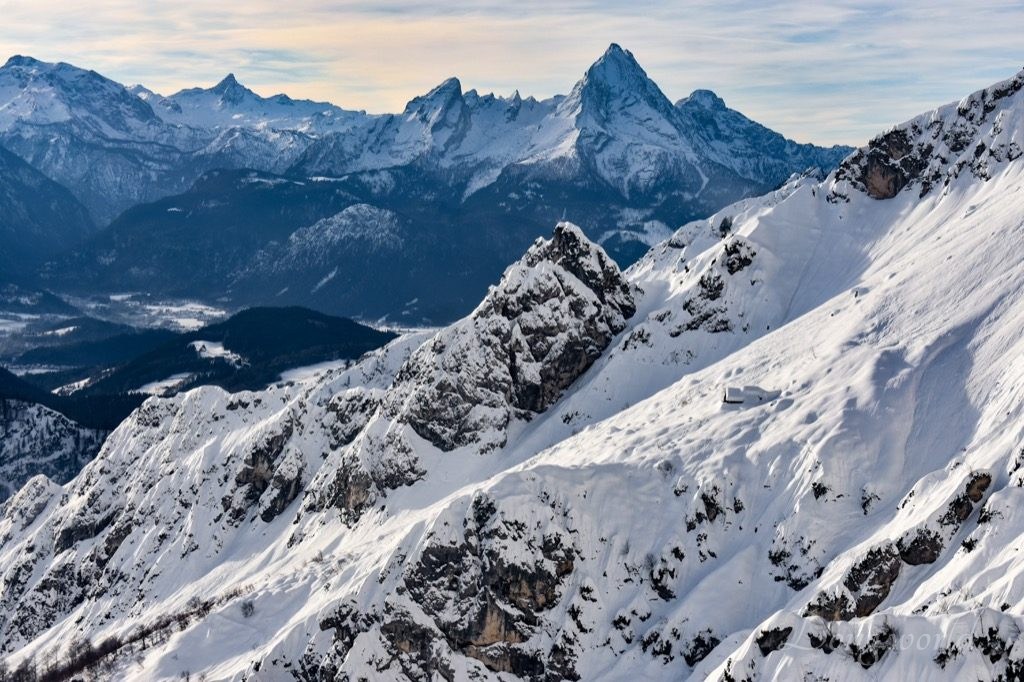
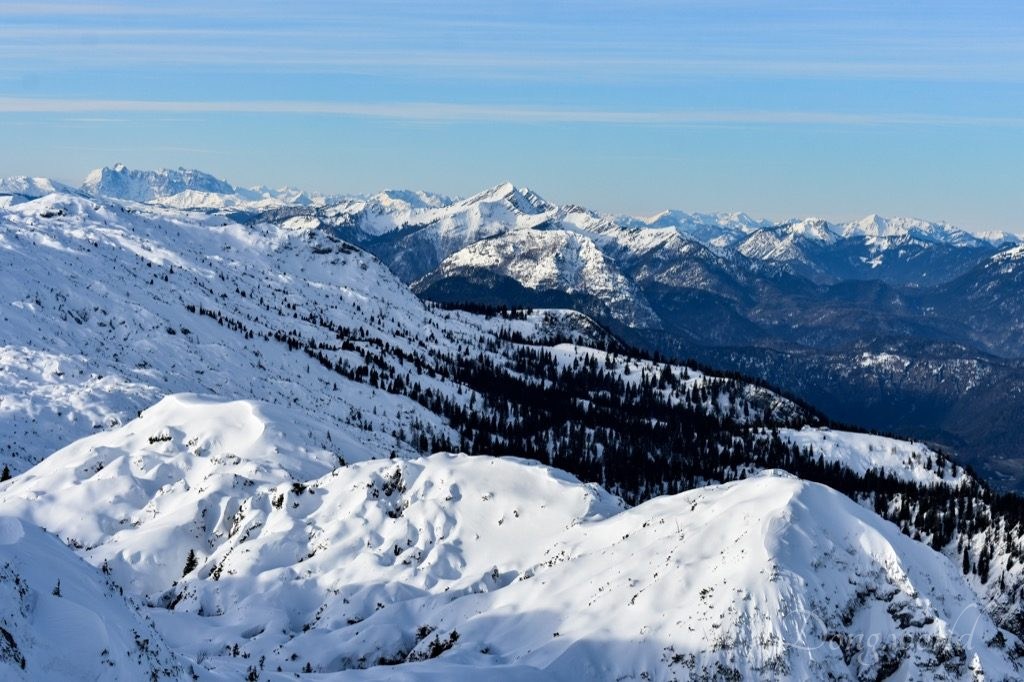
As you can see from the pictures above, during my visit, the mountain was covered in snow. My main goal of coming to the top of Untersberg was to look at the city of Salzburg from afar and above. Unfortunately, I wasn’t able to see it clearly probably because I was too far and too high. Nevertheless, The Hohensalzburg Fortress did stand out and I guess it remains the top one landmark of Salzburg no matter from where we see the city. Besides the city, why not enjoying the marvelous snowy peaks of the Alps? The Untersberg is the northernmost massif of the Berchtesgaden Alps, a prominent spur straddling the border between Germany and Austria and the highest peak is Berchtesgaden Hochthron, which stands 1973 meters above sea level. It is also on this mountain that you can visit the Ice Cave, go hiking to different peaks, go skiing, snowboarding, snowshoeing, mountaineering, climbing and paragliding. Do remember to wear warm clothes and special hiking or at least comfortable shoes. I wanted to try winter hiking but considering I was just wearing normal sport shoes, the path seemed a bit too slippery. I mean I could walk around to enjoy different views but when it came to some rather steep slopes, I found them difficult to manage.
Another two things I wanna mention about this mountain are its role as a shooting location for the movie “The Sound of Music” and its legends. Probably because the movie was shot in the summer (when the mountains was covered with green grass and small wild flowers instead of snow) and on the German side of the mountain, I didn’t realize the scene when I was there. According to Panoramatours.com, the Untersberg can be spotted twice in the movie, that is to say, in the opening scene when Maria is singing “The Hills Are Alive” and in the ending scene, when the family climb the mountain and leave the country to escape Nazi persecution. There are many legends associated with the Untersberg but I guess the most popular one is about the Emperor Charlemagne, King of the Franks from 768, King of the Lombards from 774 and of the Holy Roman Emperor from 800, who united much of Europe during the early Middle Ages. It is said that Charlemagne never really died. He is just sleeping in the Untersberg together with his loyal knights and when the empire needs him and when the ravens no longer fly around the mountain’s top, he and his men will wake up and come to the aid of his people.
3.3 Between the city of Salzburg and Untersberg
Just a reminder, if you are visiting Salzburg between April and October, I recommend visiting the Hellbrunn Palace and the trick fountains, built between 1613 and 1619 by the Prince-Archbishop Markus Sittikus von Hohenems. You can join a guided tour and the ticket is included in the Salzburg Card. For more information such as the schedule please click here. I enjoyed Christmas in the city so it was destined for me to miss this attraction. As I read from Wikipedia, the trick fountains were conceived by Markus Sittikus, a man with a keen sense of humour, as a series of practical jokes to be performed on guests. I’m not gonna spoil the surprise because you will experience it in your guided tour. I mention the palace and the fountains here in this chapter because they are located in the middle between the city and the Untersberg and while you take the bus No. 25 you can get off here. Also might be of interest for you in this area are the Salzburg Zoo, the Folklore Museum and the Sound of Music Pavillon, which appeared quite some times in the movie. If you wanna know more information about them please click the links. Now, let’s go back to the city and take a close look at it.
4. Three hills surrounding the historic center
In general, three hills surrounding the historic center of Salzburg provide spectacular views over it, that is to say, the Festungsberg hill, the Mönchsberg hill and the Kapuzinerberg hill. The first two can be reached both by foot and by funicular train or lift while the third one can only be reached by foot. In the next three sections, I’ll introduce all three of them to you by providing some practical information and showing what you can expect. I’m sure wherever you come from, you will fall in love with this pretty city.
4.1 Festungsberg (Hohensalzburg Fortress)

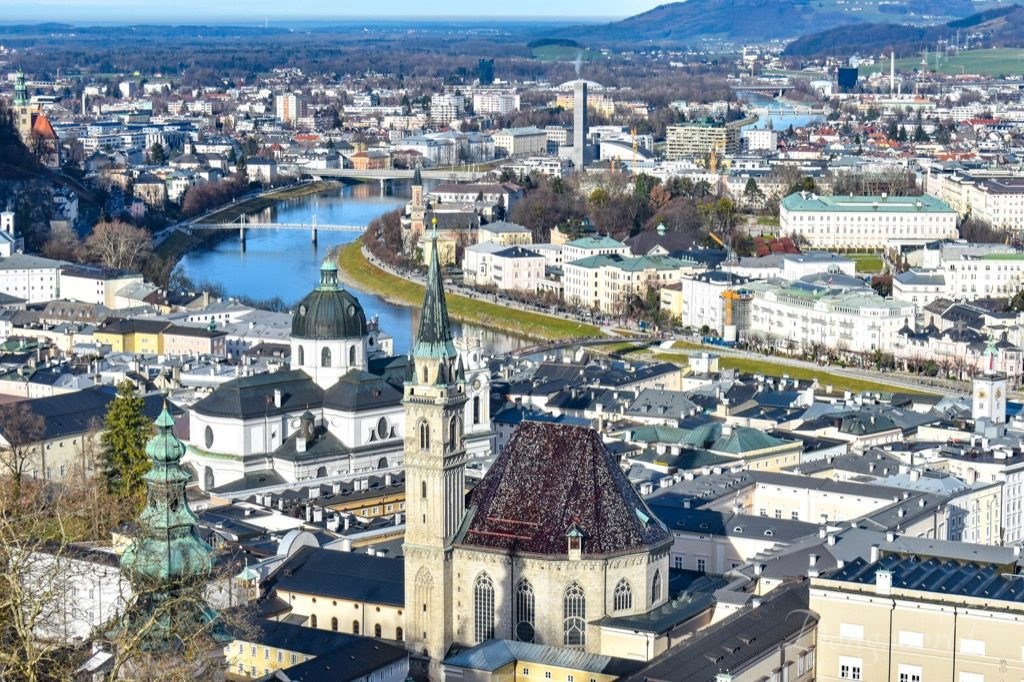

In my first post about Salzburg, I gave a rather detailed introduction to Hohensalzburg Fortress on top of the Festungsberg hill including the viewpoints, tour with audio guide, museums, state rooms, etc. If you haven’t read it, please click here and scroll down to chapter 3. You can reach the viewpoint either by foot or easily by the oldest funicular train still in operation in Austria, which takes you from the valley station at 437 m to the top at 536 m above sea level in just 54 seconds. The Salzburg Card allows you one round trip and if you wanna know about the schedule and ticket prices, please click here.
4.2 Mönchsberg (Museum of Modern Art)

As you can see in the picture above, while you are in the city, it won’t be difficult to notice the 19th-century water tower and the modern building which hosts the Museum of Modern Art in Salzburg. That’s the second platform I’m gonna recommend to you to have a nice view of the city and its surroundings.

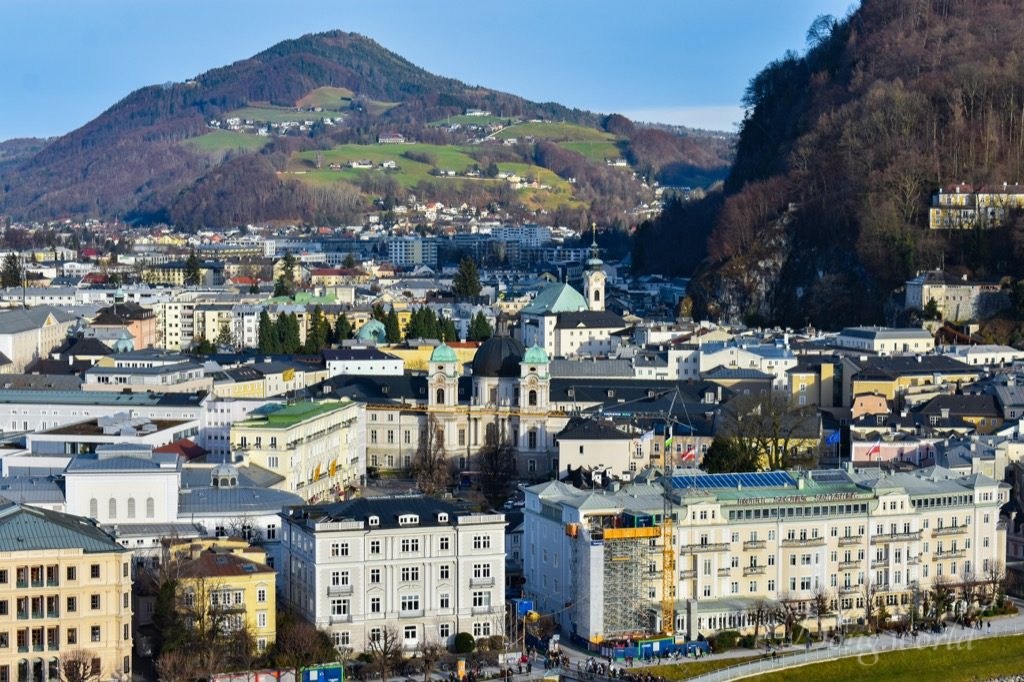
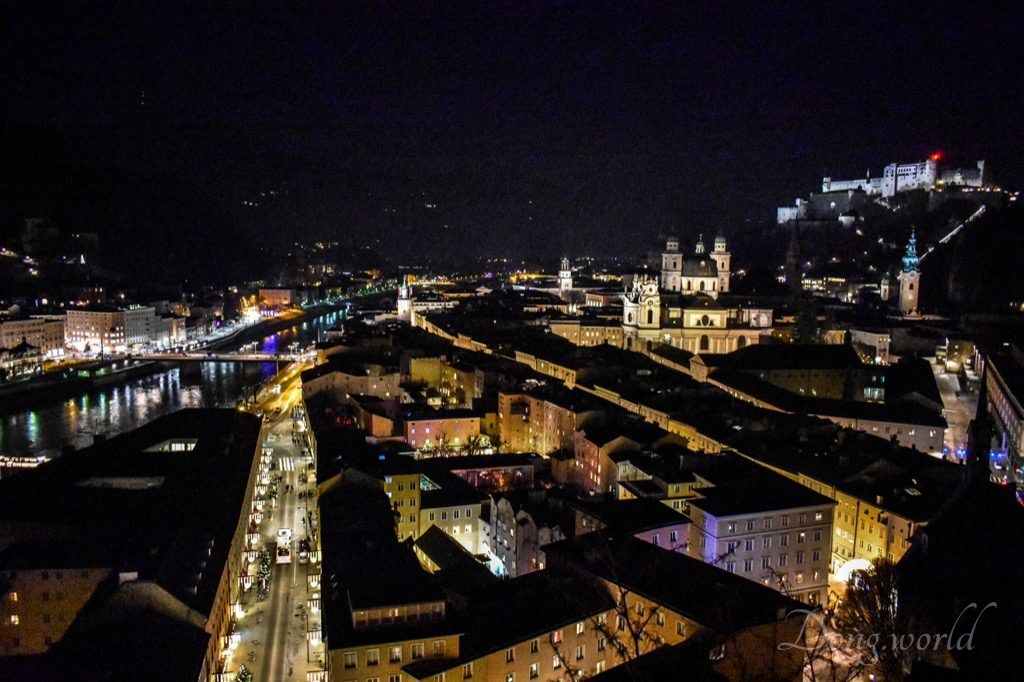
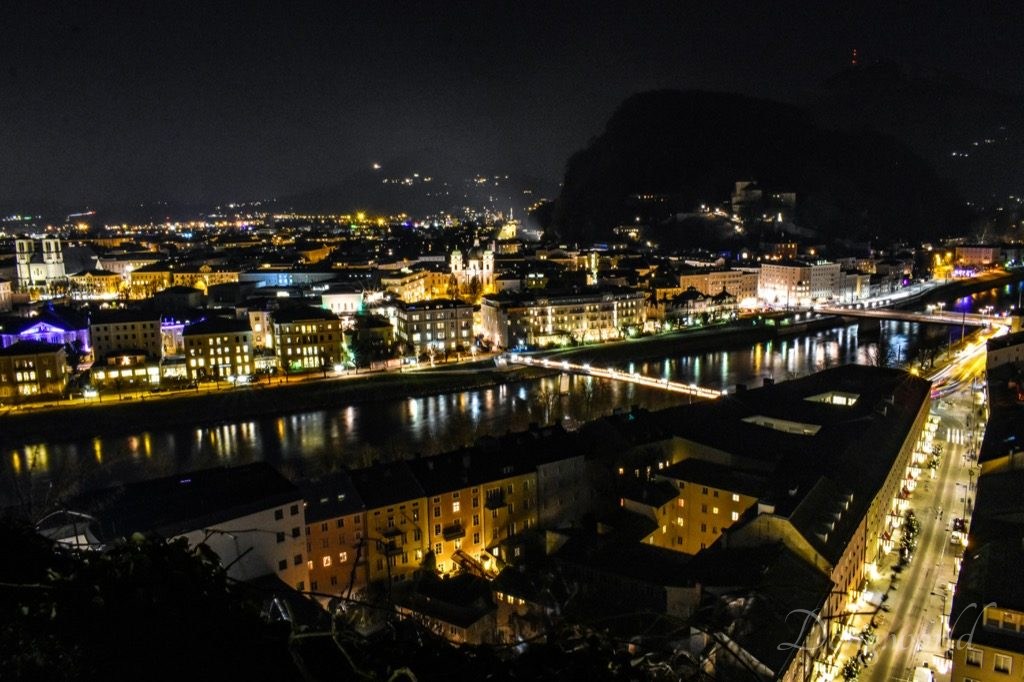
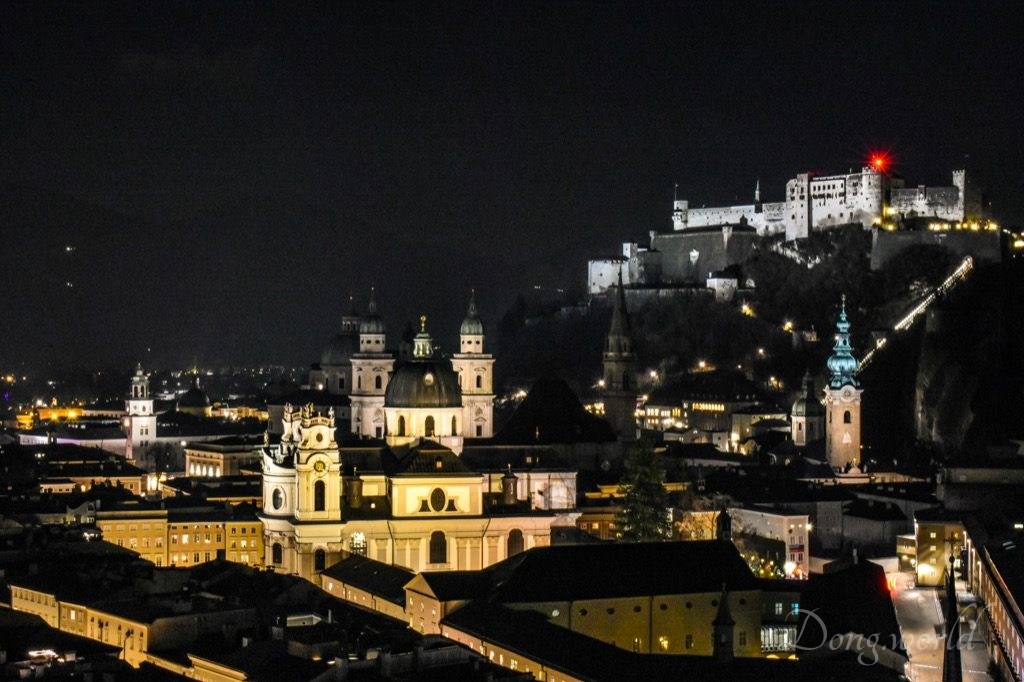
As you can see from the pictures above, the view from the terrace of the Museum of Modern Art and from the Restaurant M32 is just fabulous, both in the day and at night. The rooftops, the towers and in particular the fortress on top of the Festungsberg co-exist in peace and harmony. How do we arrive at the terraces then? Well, you can choose to walk up or simply take a lift.
The Mönchsberg was named after the monks of the nearby St. Peter’s Abbey and it extends a total length of 500 meters from the Festungsberg, along the left bank of the Salzach River to Mülln. The highest point of it reaches 508 meter above sea level. Covered with meadows and woodlands, this nature reserve is popular among not only tourists but also the locals. When I was there, I saw quite some people hiking, jogging or just wandering around. In order to reach the viewing platforms, a lot of footpaths can be taken depending on where you are in the city. For example, from Nonnberggasse, from Toskaninihof, from Mülln Church, from Brunnhausgasse and so on. Please click here to check out the detailed routes on the map.
I, being lazy, chose the fastest and most comfortable way, the Mönchsberg lift. The entrance is located at the Anton-Neumayr-Platz and the lift takes you up to the terrace in only 30 seconds. Please note that you can use your Salzburg Card to take the lift once (both up and down) for free and if you wanna take it again you need to buy the ticket. For example, I decided to go up to the viewing platform at night for some night photo shooting and the “round-trip” ticket costs € 3.70 for an adult. If you wanna know more about the ticket prices or opening hours of the lift, please click here.
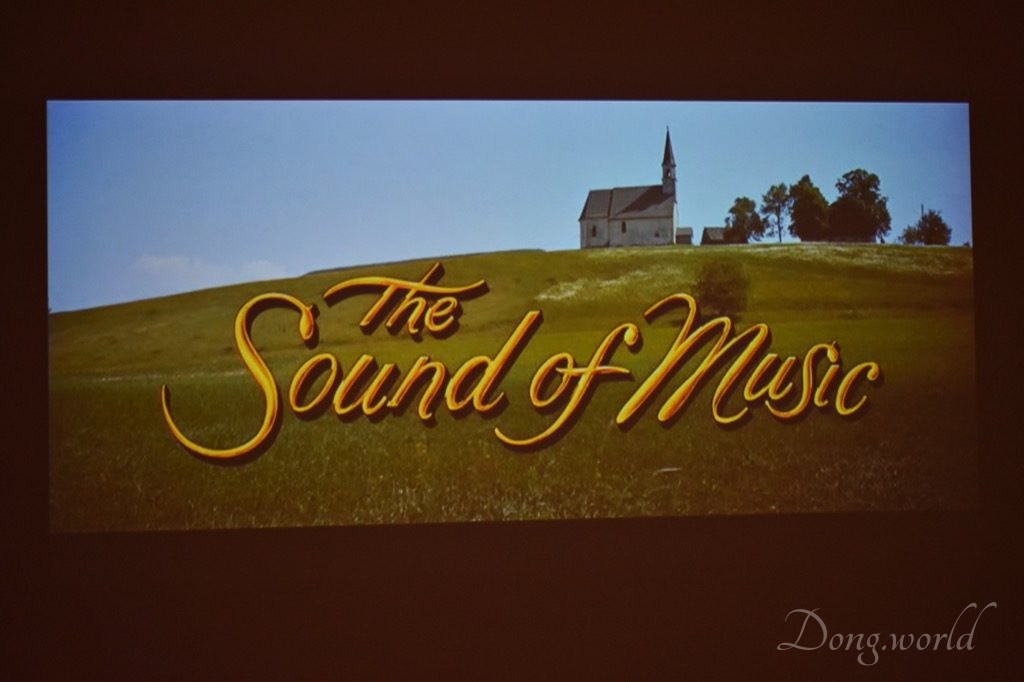


Besides the spectacular viewing platforms, the other popular attraction on the Mönchsberg is the Museum of Modern Art. Please note that the Museum of Modern Art in Salzburg is actually divided into two parts, one of which is called Museum der Moderne Mönchsberg (which is here) primarily hosting large-scale exhibitions within an international framework while the other one is called Museum der Moderne Rupertinum, located in the festival district and specializing in exhibitions of graphic art and photography. In total, the two locations cover an area of about 3000 square meters and present art from the 20th and 21st centuries. To be honest, I neither am a great fan of nor know much about modern art so please click here to check relevant information such as the current exhibitions, opening hours etc. Both entrance tickets are included in the Salzburg Card.
During my visit to the Museum der Moderne Mönchsberg, the motion picture “The Sound of Music” was exhibited and I watched part of it. That was a nice opportunity and interesting experience to review some scenes in the city where they were shot.
4.3 Kapuzinerberg




I actually came to this hill twice during my stay. Once during the night and once during the day. For the night visit, I took the path called “Kapuzinerberg” from the Linzergasse, which you can easily see on google map. I walked past six baroque chapels depicting Stations of the Cross, in which the statues seemed a bit scary especially when no one was around. If you want to enjoy a good view over the historic city center, I don’t really recommend this path because a large part of the view is blocked by the monastery and the hill (as you can see in the last picture in the gallery above). Fortunately, in the morning of the next day, I discovered another path which is perfect for admiring the city and its surrounding snowy mountains from the north-west to the south-east (as you can see in the pictures above). In order to reach this path, you need to take a stairway called “Imbergstiege“, which you can find on google map, and once you are about to arrive at the monastery, you should see a path on your right. That’s the path I’m talking about and with a walk along it, you will have a wonderful panoramic view of Salzburg at the background of the “white giants”. Next time, I have to come back here and shoot some night photos.
Please take a look at the third picture above which shows a convent with a tower with a red top. That’s the Nonnberg Convent, internationally famous thanks to novice Maria Augusta Kutschera. As I read from Wikipedia, founded in around 712 or 715 by St. Rupert of Salzburg, it is the oldest continuously existing nunnery in the German-speaking world. Since 1996, it has been inscribed in the UNESCO World Heritage. As I mentioned in the Introduction part, the movie “The Sound of Music” is based on a real family in Salzburg and its story (with certain variations). Maria Augusta Kutschera, a novice in the Nonnberg Convent, was sent by her abbess as governess to widower Baron Georg Ritter von Trapp, for whom she was to take care of his children. Afterwards, Maria married the baron, became the stepmother and founded a family choir in the early 1930s. She wrote “The Story of the Trapp Family Singers” which was published in 1949 and served as inspirations for the 1959 Broadway musical “The Sound of Music” and the 1965 film of the same name. Do you remember at the beginning of the film when the nuns are “singing out” their opinions about Maria? Those scenes were shot here. Unfortunately I didn’t have time to visit this convent but if you are interested, it is open daily from 6:45 until dusk (until 19:00 in the summer). For more information, please click here.
5. Mirabell Palace and Gardens

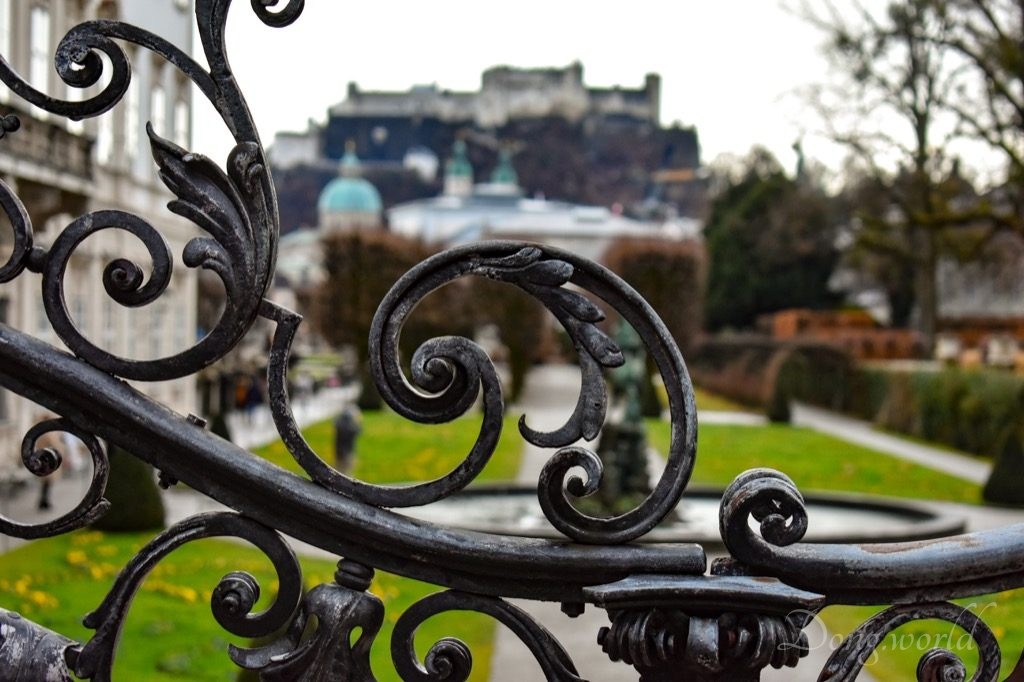
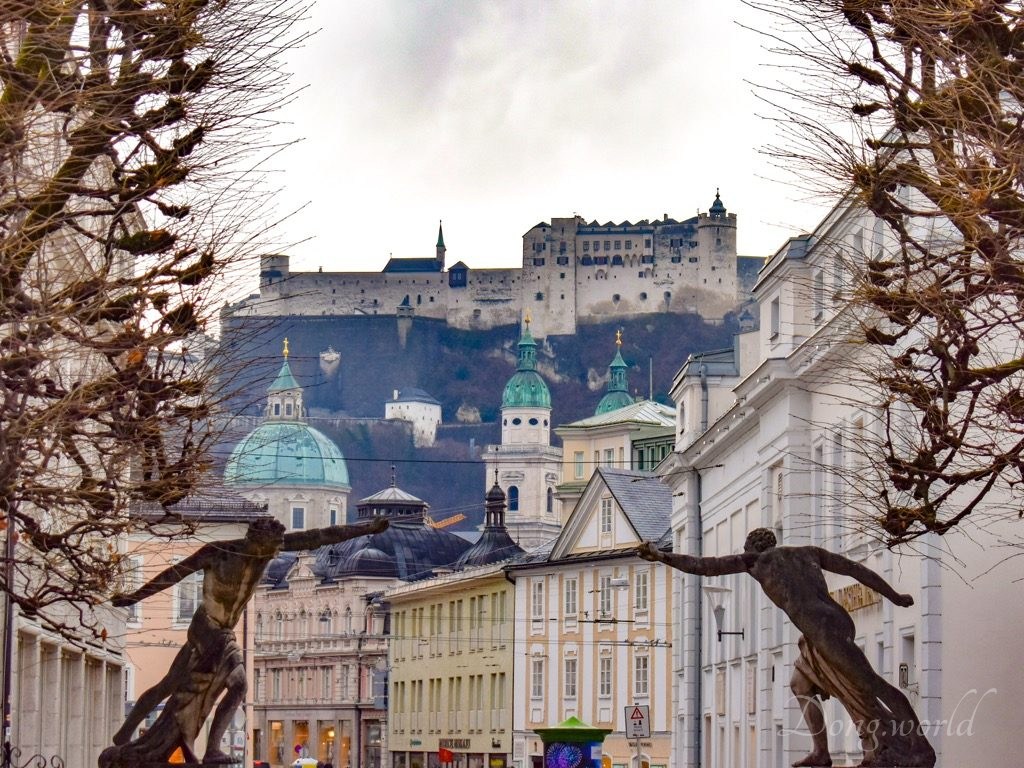

The palace was first built in around 1606 commissioned by Prince-Archbishop Wolf Dietrich von Raitenau for him and his mistress Salome Alt. In the early 1610s, Prince-Archbishop Markus Sittich von Hohenems, Wolf Dietrich’s successor, gave the palace its current name which is an integration of two Italian words, “mirabile” which means admirable and “bella” which means “beautiful”. It was rebuilt in lavish Baroque style from 1721 to 1727 according to the plan by Johann Lukas von Hildebrandt and the current Neoclassical appearance dates from around 1818, when the place was restored after a big fire. The most famous room in this palace is undoubtedly the Marble Hall, which was the former banquet hall of the prince-archbishops and nowadays is generally regarded as one of the most beautiful wedding halls in the world. Do you remember the Salzburg Palace Concerts I mentioned in the Introduction chapter? The Marble Hall is the venue of them. The “Angel Staircase”, which leads up to the Marble Hall, is decorated with, as the name suggests, numerous cherubs. I wasn’t sure whether the palace is open to the pubic or not so I didn’t enter. Nevertheless, later I learnt from Salzburg.info that though the other rooms which house the municipal council are closed to the public, the Angel Staircase and the Marble Hall are accessible to visitors free of charge. For more information such as the opening hours please click the link above.
The Mirabell Gardens were completely redesigned under Prince-Archbishop Johann Ernst von Thun in the late 1680s and (after several additions) nowadays, they feature the Pegasus Fountain, the Grand Fountain, the Hedge Theater, the Dwarf Garden, the Rose Garden and the Orangery. For more information about the opening hours of each of these attractions please click here and remember, they are all admission free. Again, I’ll talk about the “The Sound of Music” shooting locations because these gardens are the place where Maria and the children sing “Do-Re-Mi” while dancing around the winged-horse fountain and using the steps as a stave, at the background of the fortress and the teal domes. To be honest, the gardens seemed rather cold in the winter. In the movie and in the pictures which were taken in the summer, they look so lively with fresh green grass and trees and flowers of all colors. Maybe my next visit to Salzburg should be arranged in the summer then.
6. Other viewpoints in the city center
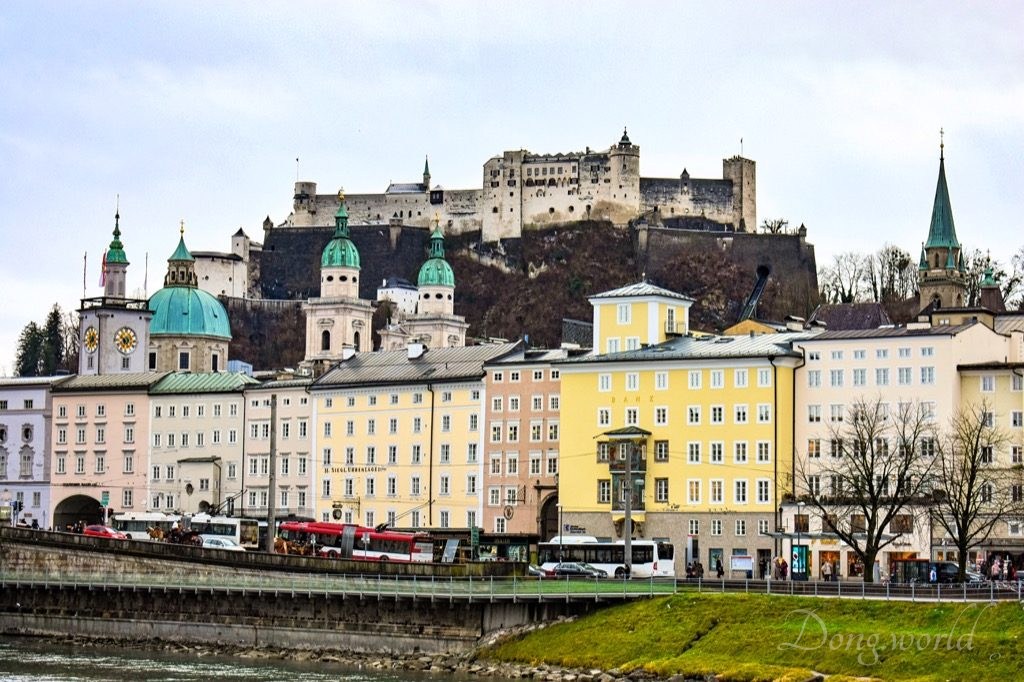
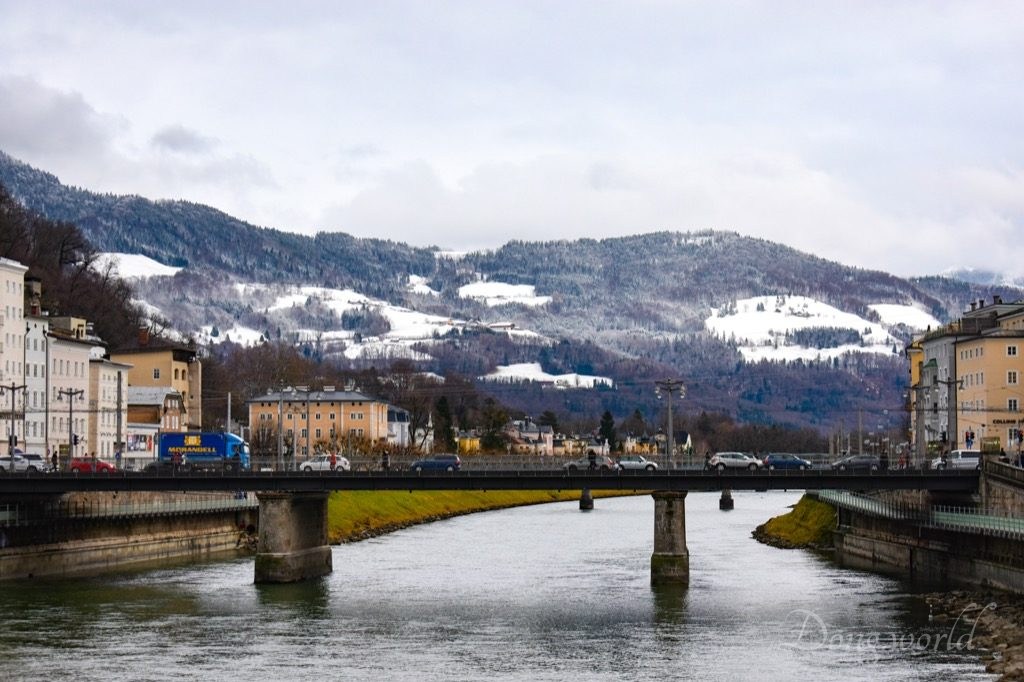
Another viewpoint I’d like to recommend to you is the Makartsteg bridge, from which you can see the Staatsbrücke bridge, the nearby hills, the houses along the Salzach river, the domes, church towers and of course the fortress. On the day of my departure, it began to snow. I expected that the historic center would turn white but the dream wasn’t realized. How would Salzburg look if it wears a silver-white “coat”? It’s actually not that difficult to imagine.
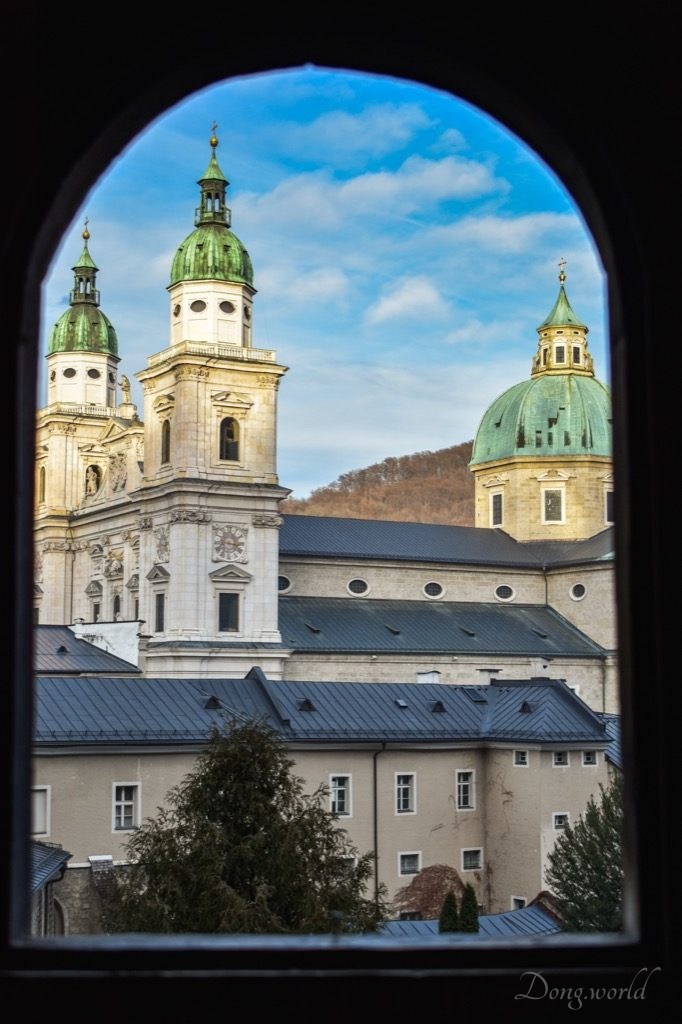
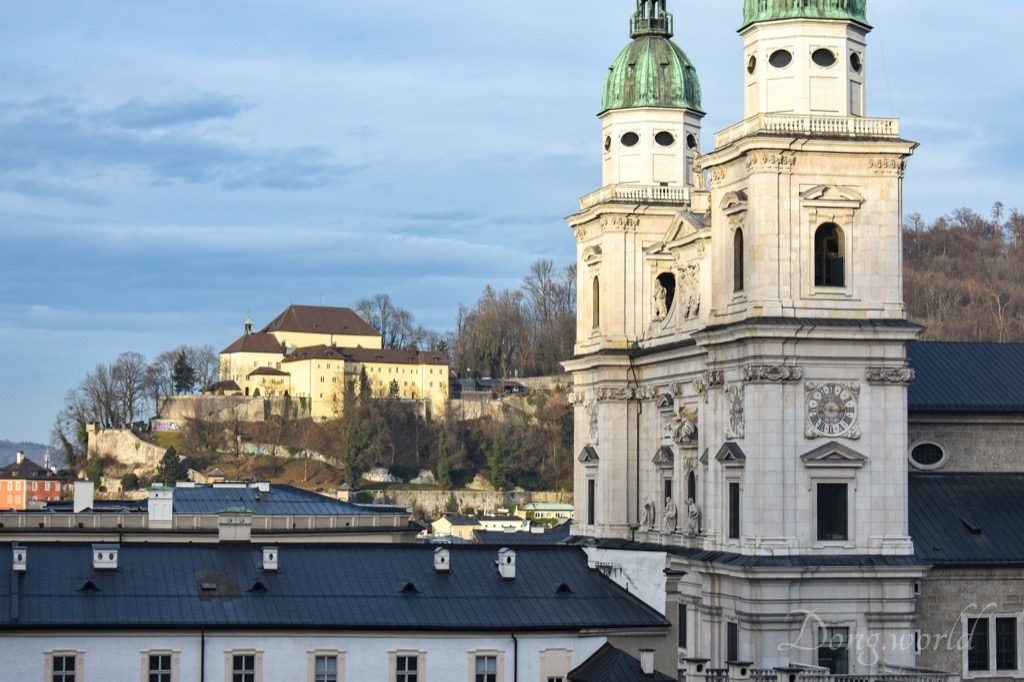
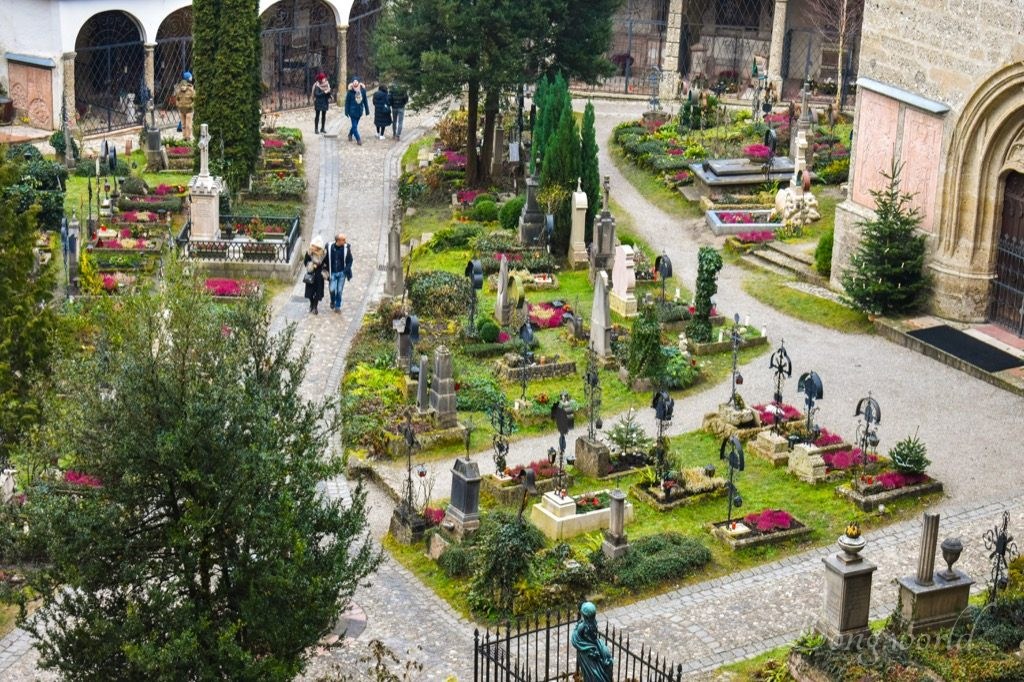
As I mentioned in my first post about Salzburg, from the small viewing platform in St. Peter’s Catacombs, you can enjoy a wonderful panoramic view (as you can see in the pictures above) including St. Peter’s Church, the tower and roof of the Franciscan Church, the church of the University of Salzburg, the Capuchin Monastery (Kapuzinerkloster), the Kapuzinerberg hill and of course, St. Peter’s cemetery and the late-Gothic Margarethenkapelle Chapel.

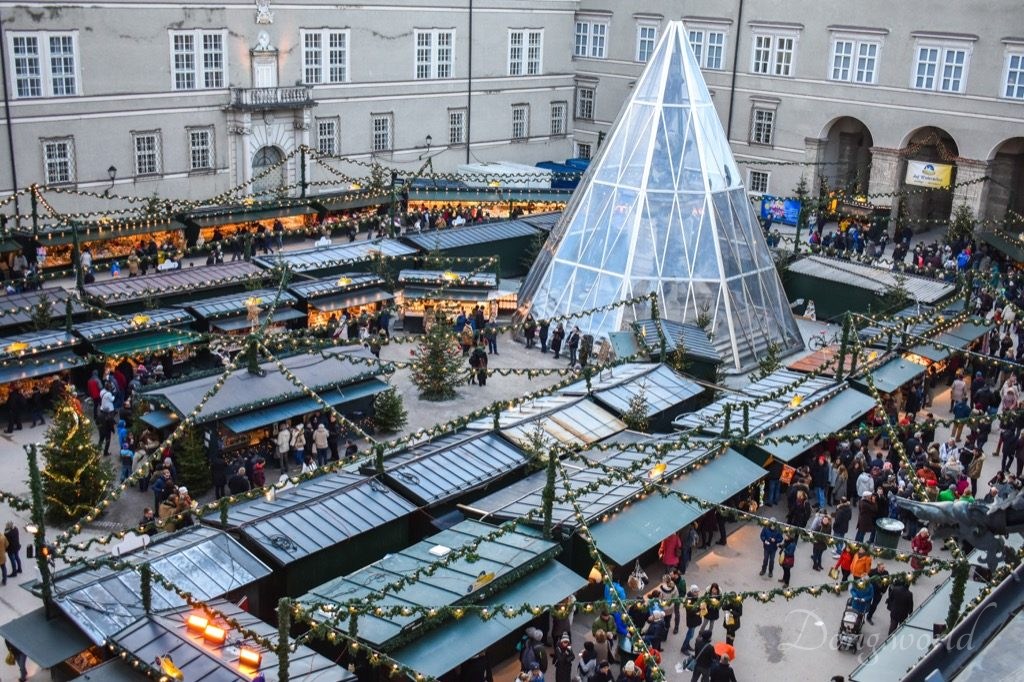
Also mentioned in my first post about Salzburg, the panorama terrace, which you will go through during your visit to the DomQuartier museums, connecting the Residenz and the cathedral provides a spectacular view of the city center, in particular the Residenzplatz, Mozartplatz and Domplatz (as you can see in the pictures above). Besides the main squares, you can also see the Goldgasse, the Kapuzinerberg hill and its monastery, the Church of St. Michael, the Residenzbrunnen (a fountain made of Untersberg limestone, featured in the movie “The Sound of Music” and considered the largest Baroque fountain in Central Europe”), the Neue Residenz and its clock tower, St. Peter’s church, Mönchsberg hill, the Long Gallery, the Immaculate Mary Column, the Museum of St, Peter’s Archabbey, Salzburg University, the Franciscan Church and so on.
Some other locations where I think you can take some nice photos are the street outside the Festival Halls (Hofstallgasse as you can see in the first picture in the gallery above), the Horse Pond (as you can see in the second picture in the gallery above), which Maria and children pass through during a carriage ride in the movie “The Sound of Music“, the Kapitelplatz (as you can see in the third picture in the gallery above) and the Getreidegasse (as you can see in the 4th and 5th pictures in the gallery above), which is not only where Mozart’s birthplace is located but also one of the most beautiful shopping streets in the world.
After reading this post, I hope you won’t be worried about not knowing where to go to appreciate the beauty and charm of Salzburg. For me, whenever I visit a city, I always ask the tourism office one question. “Are there any places where I can go to have a good view of the city?” The answer I usually get is some church tower if the city is old or some tall building if the city is modern. A mountain and three hills? The answer given by the tourism office of Salzburg did make me curious. After following me to the viewpoints, I hope you agree with me that the cityscape of Salzburg is indeed beautiful and unique.
In my next post, which is also the last post about Salzburg, I’ll focus on some more museums such as the Salzburg Museum, Panorama Museum, Christmas Museum and Haus der Natur to help you learn and understand more about the city’s history and culture. What’s more, even though I didn’t have time to visit some of the museums such as the Outdoor Museum and the Stiegl-Brauwelt Brewery Museum, I’ll give you a brief introduction to them so that you have more choices when you are here. Remember, museums can also be fun.
